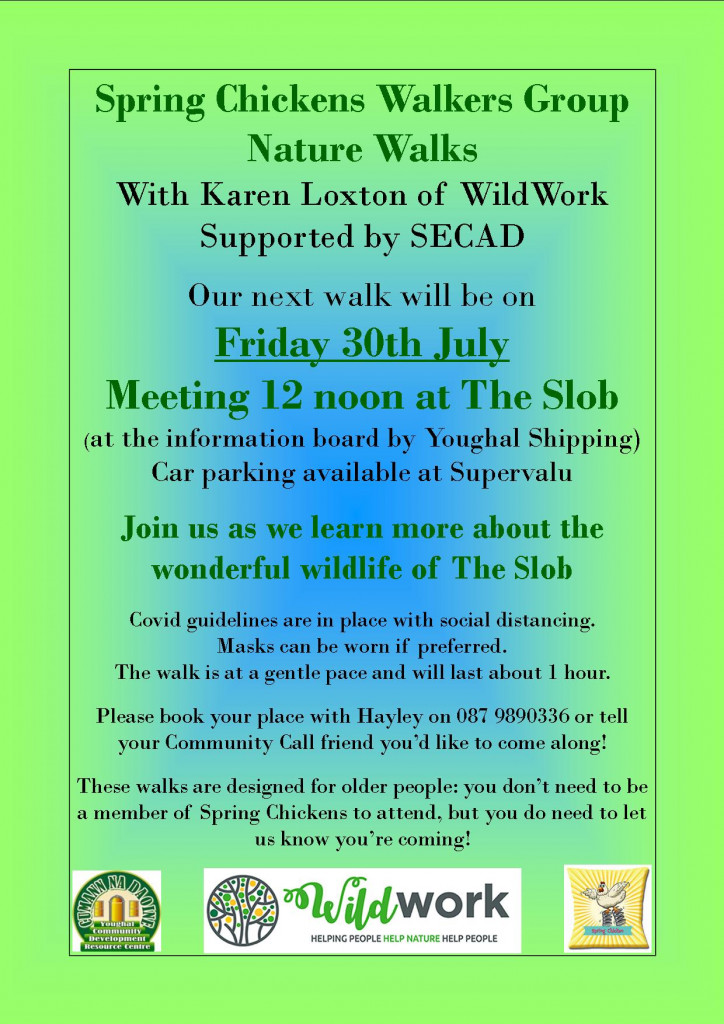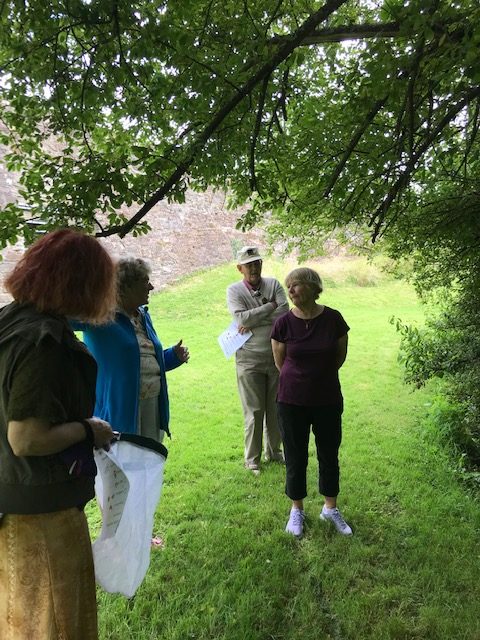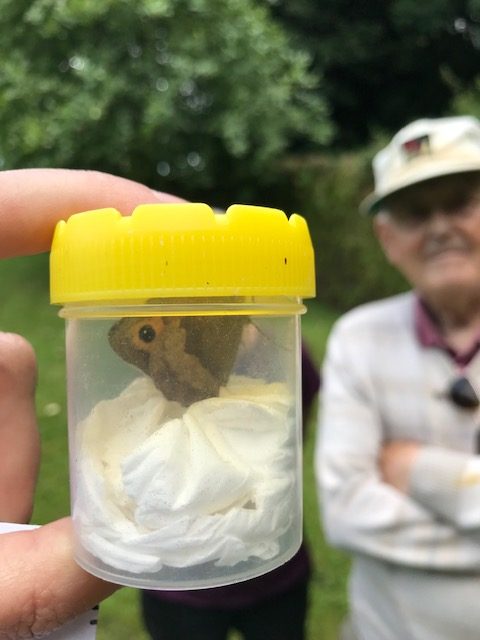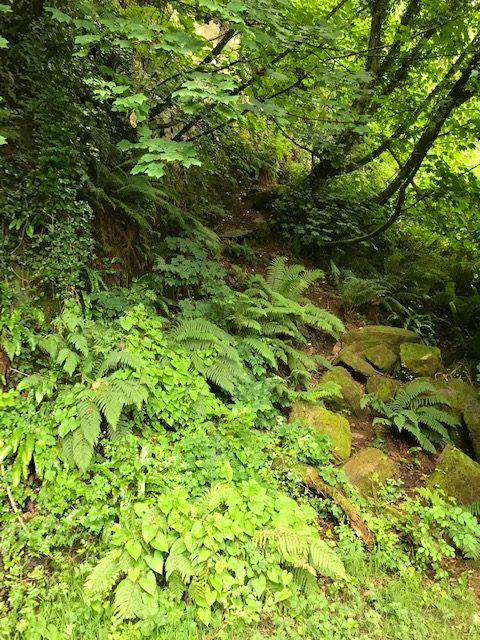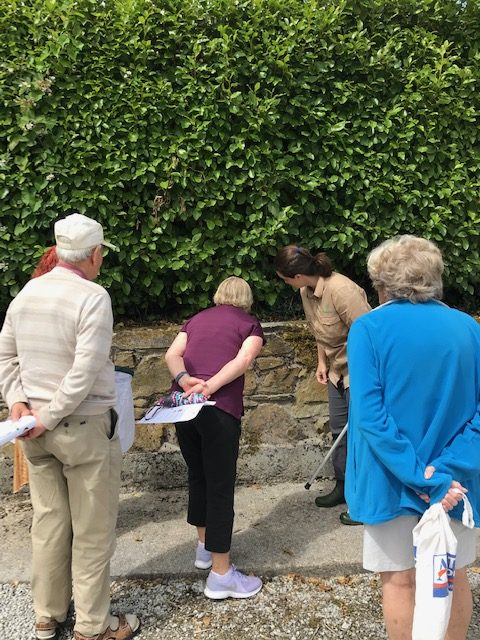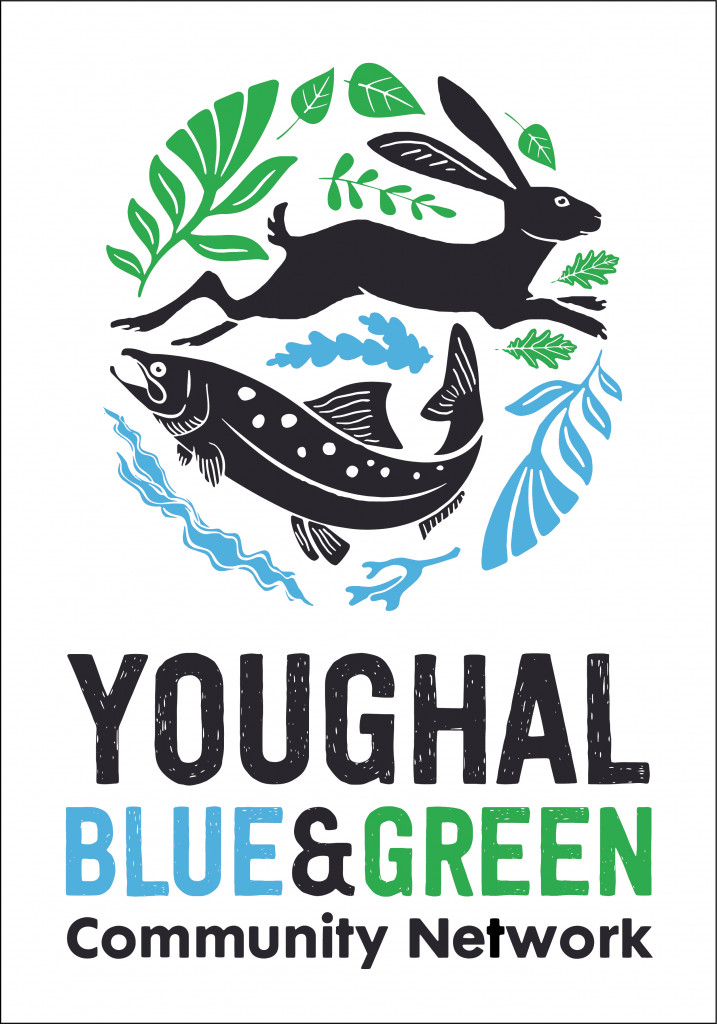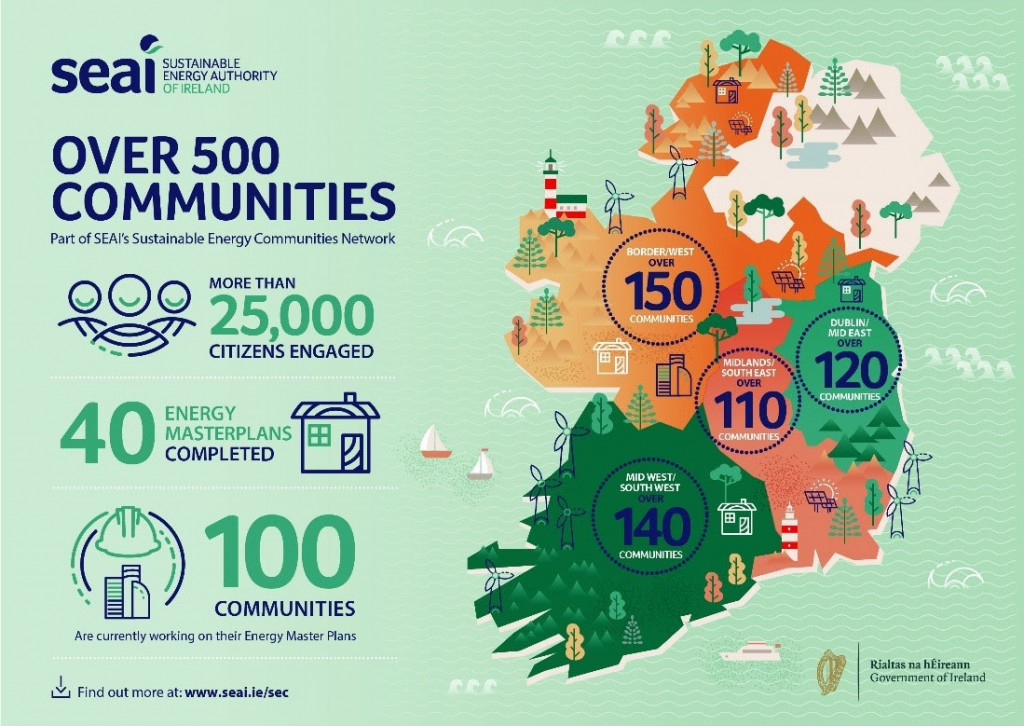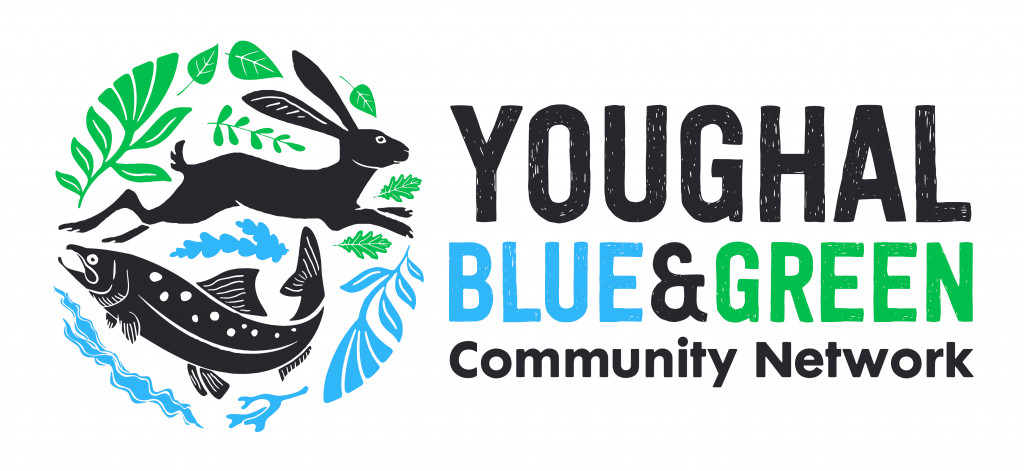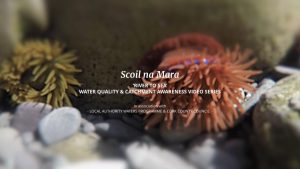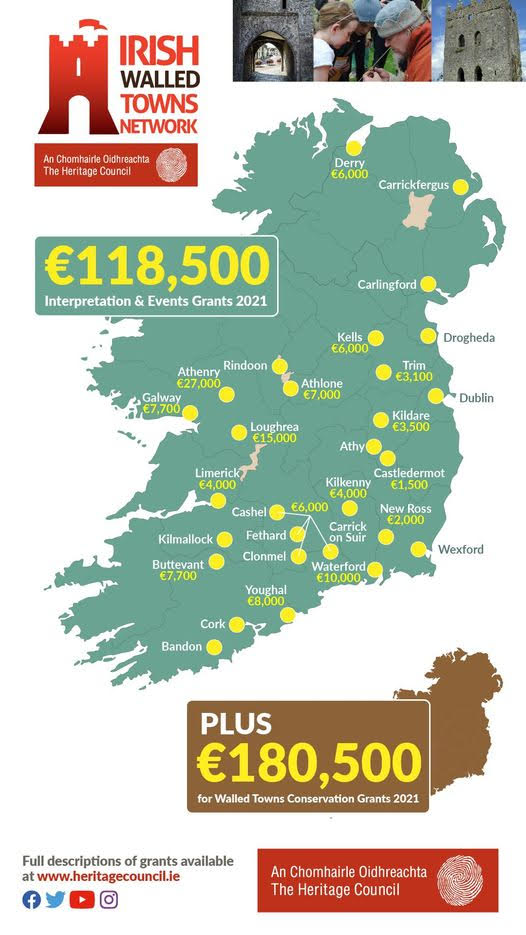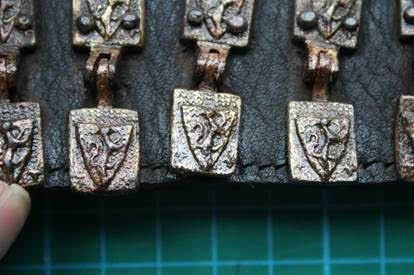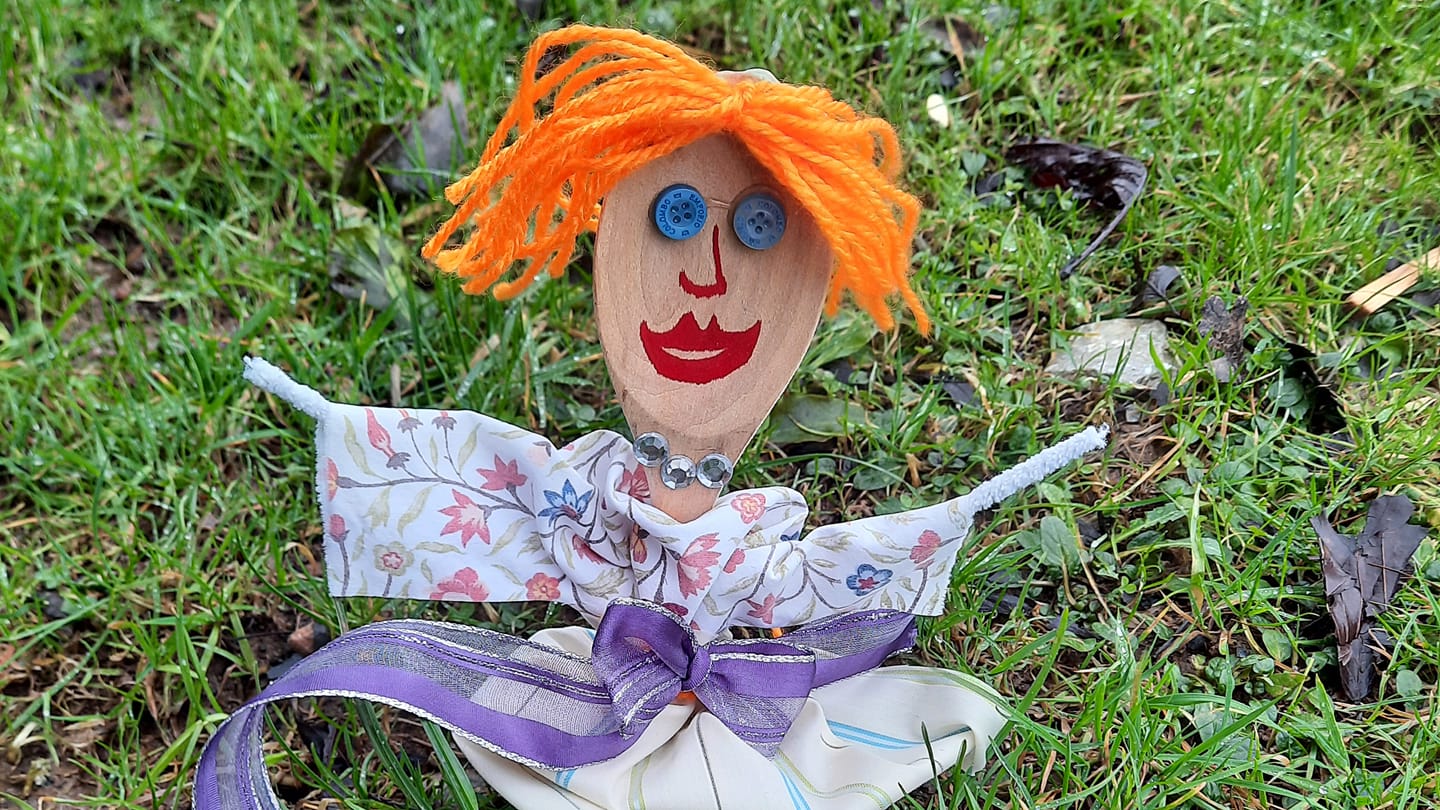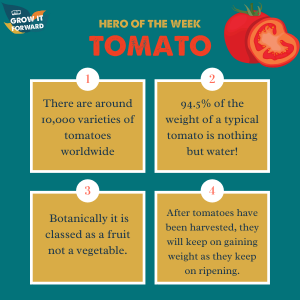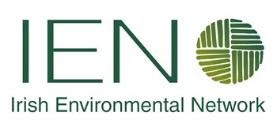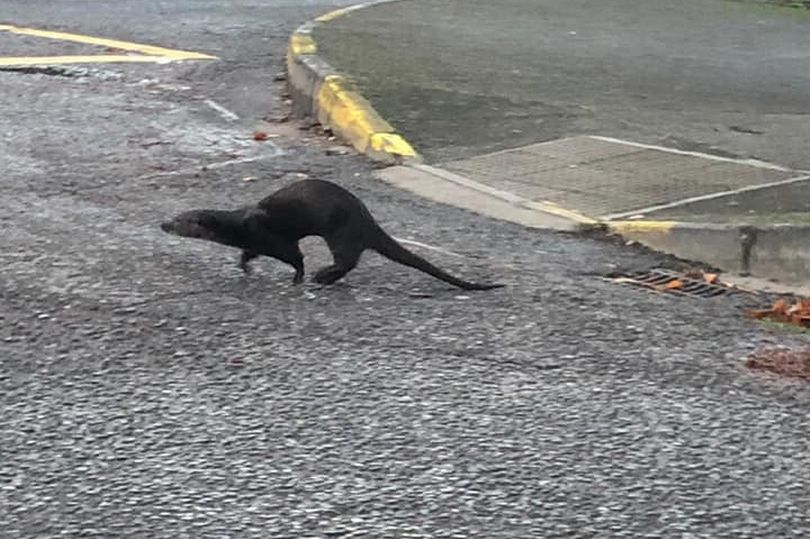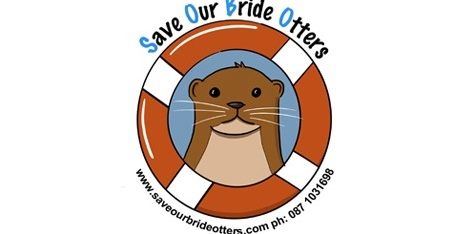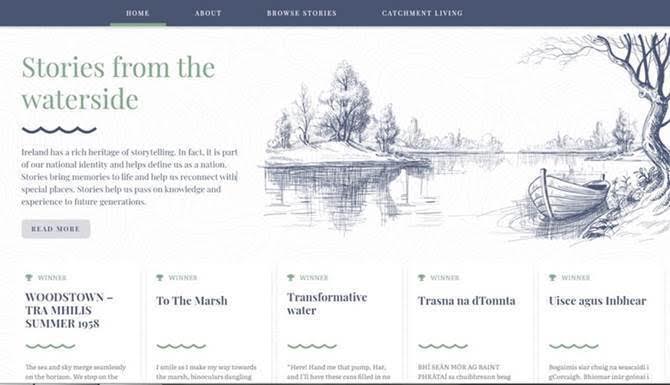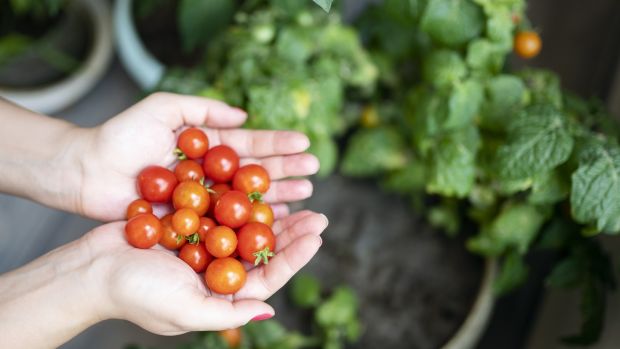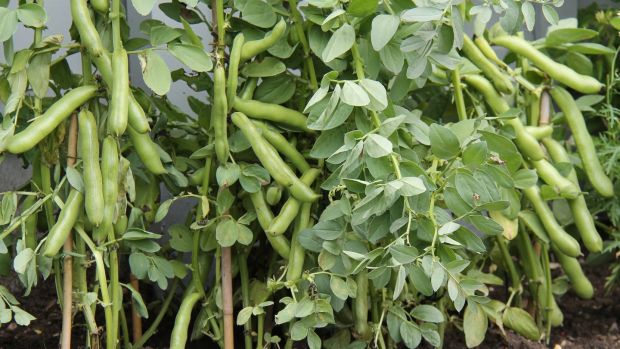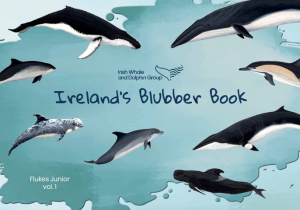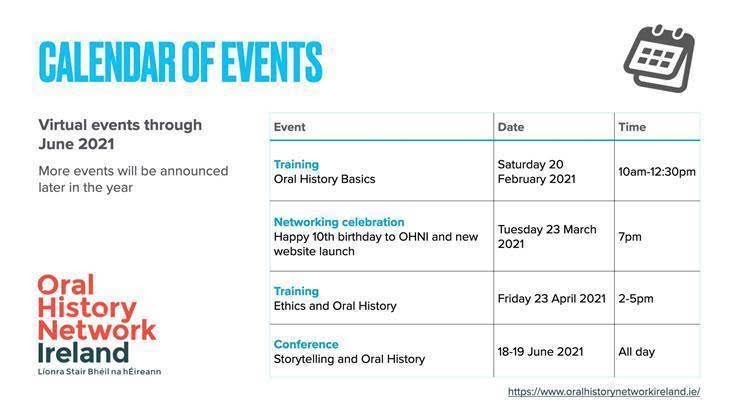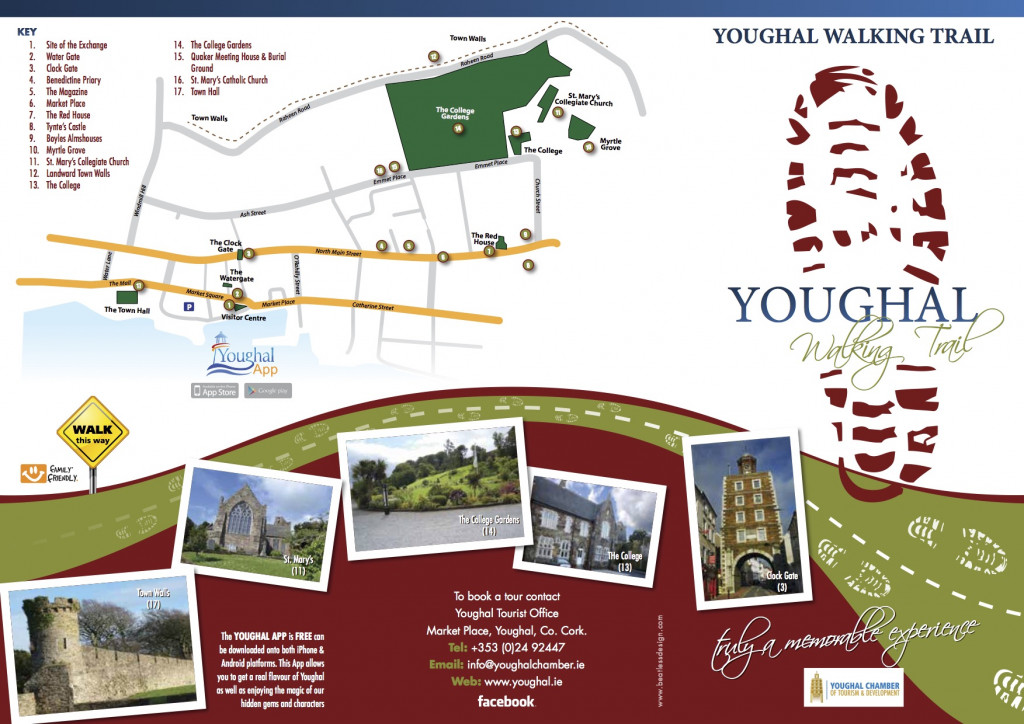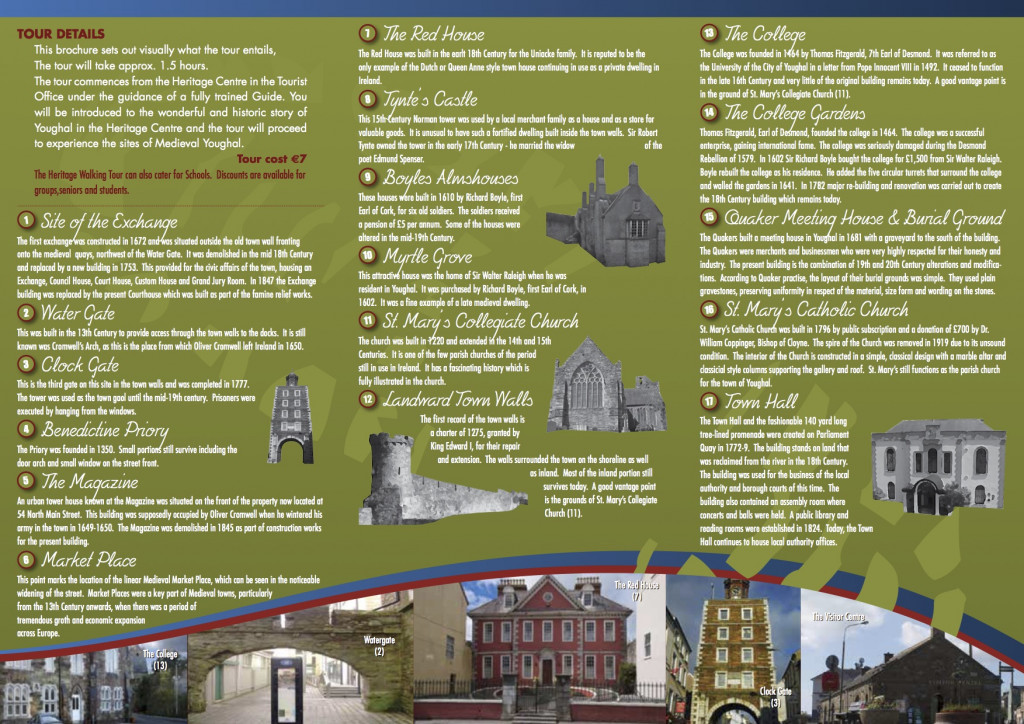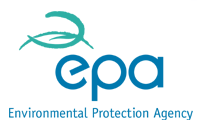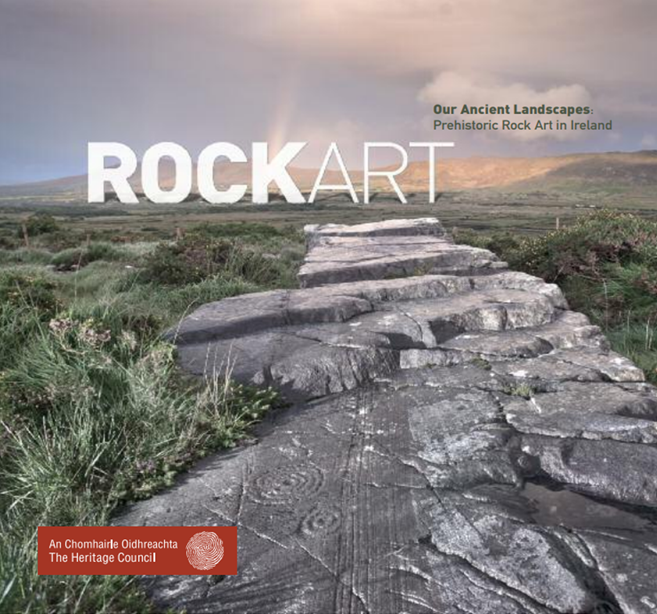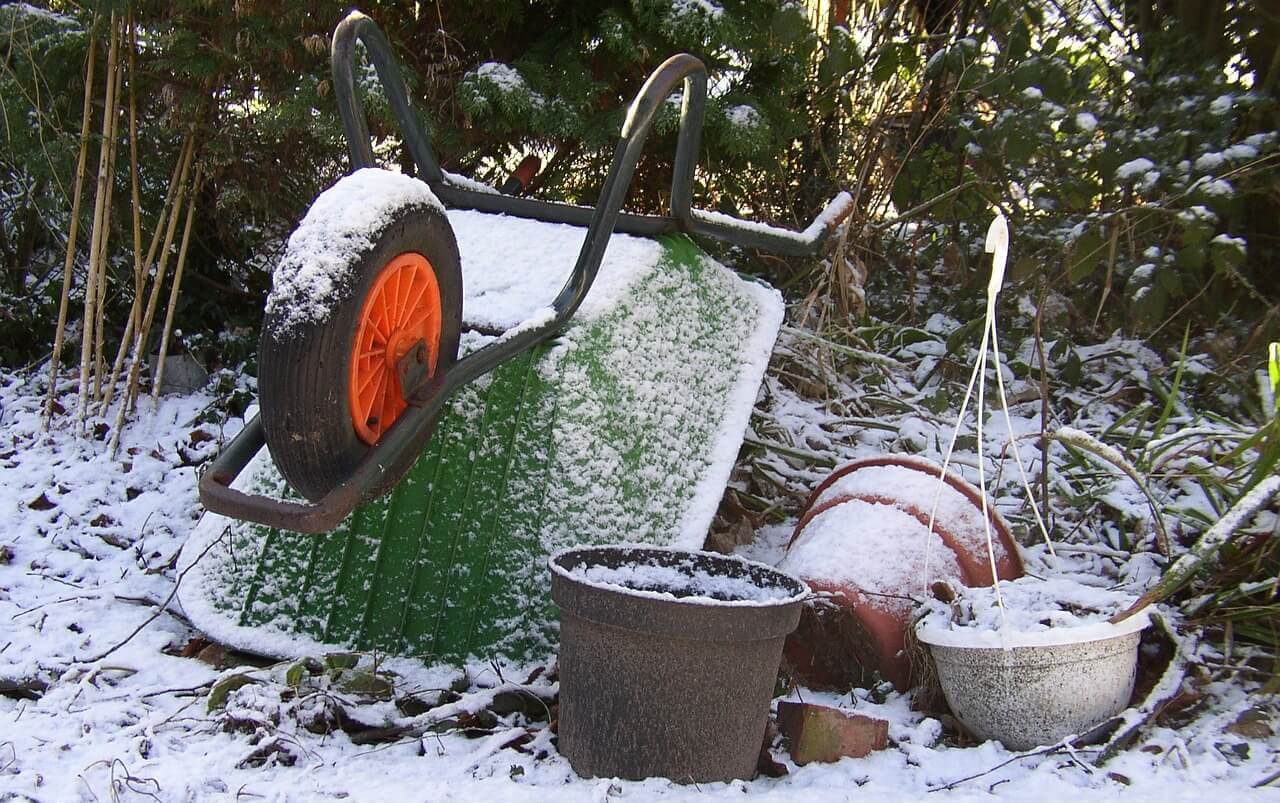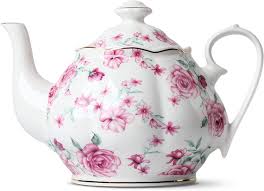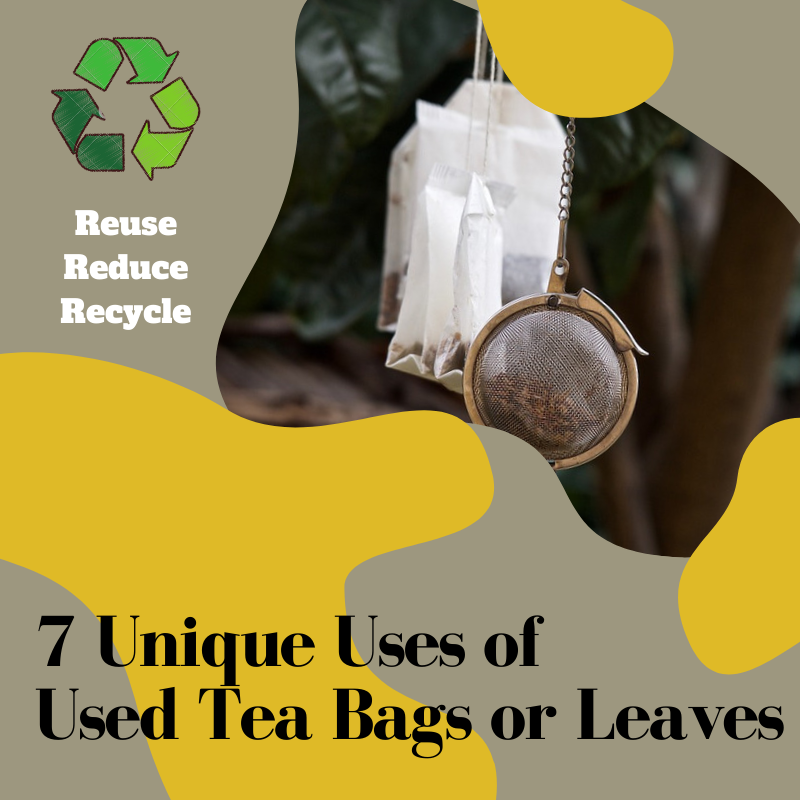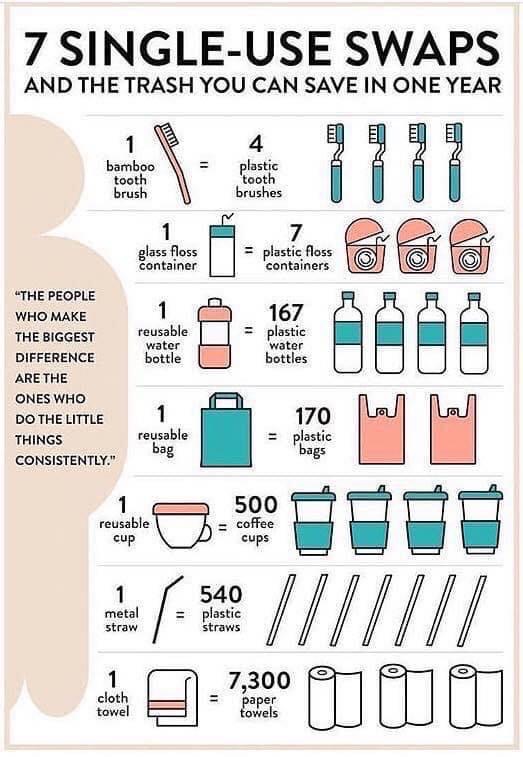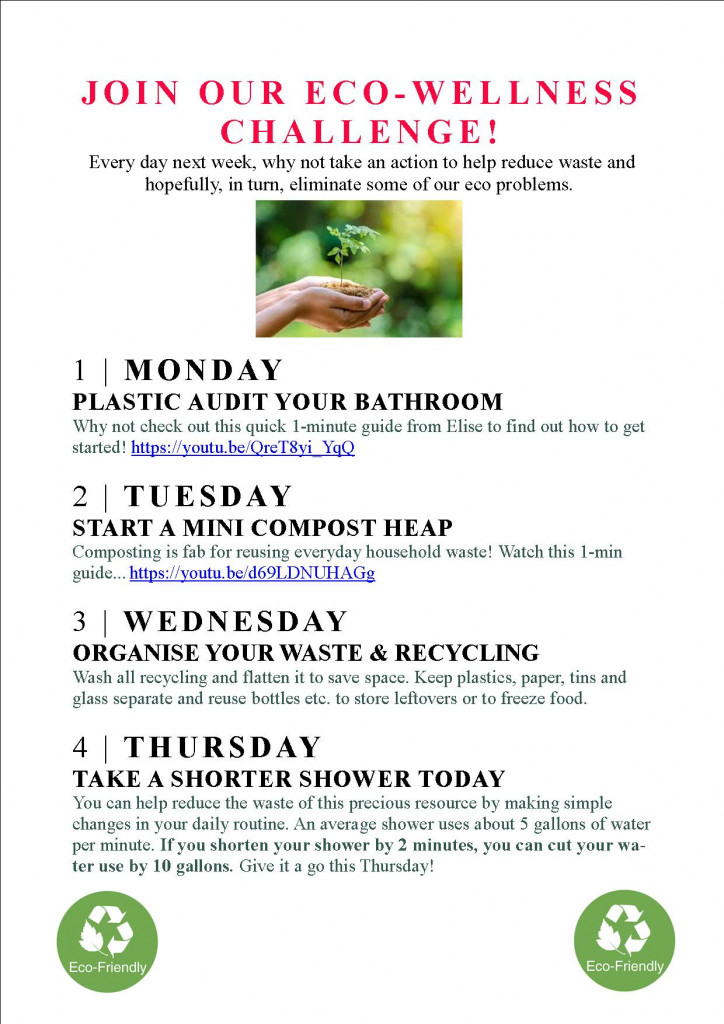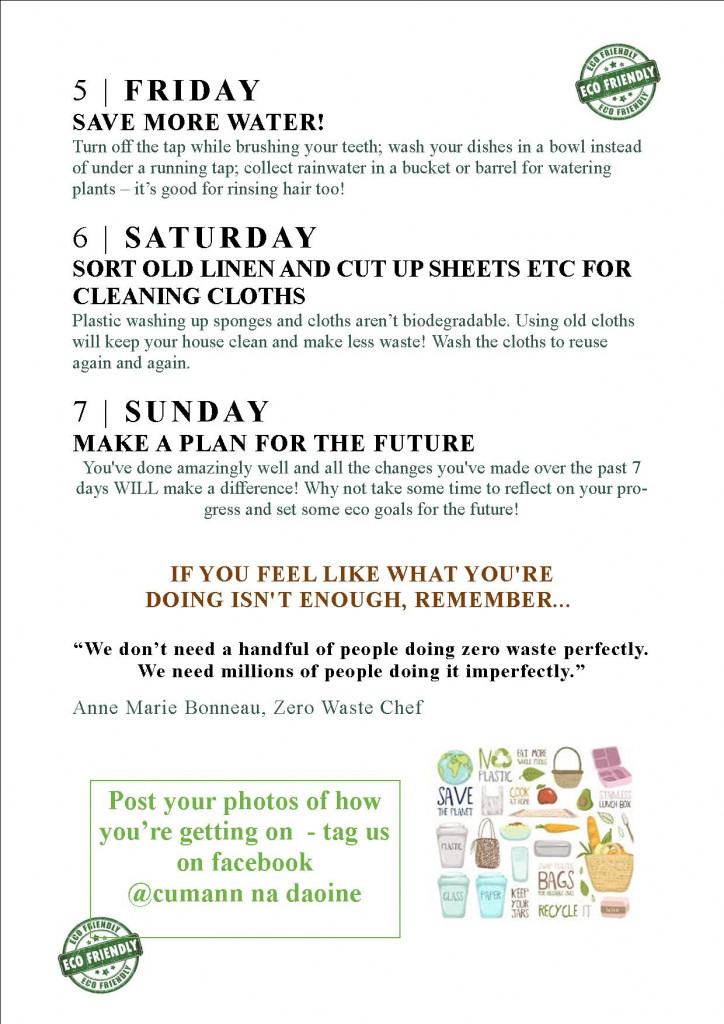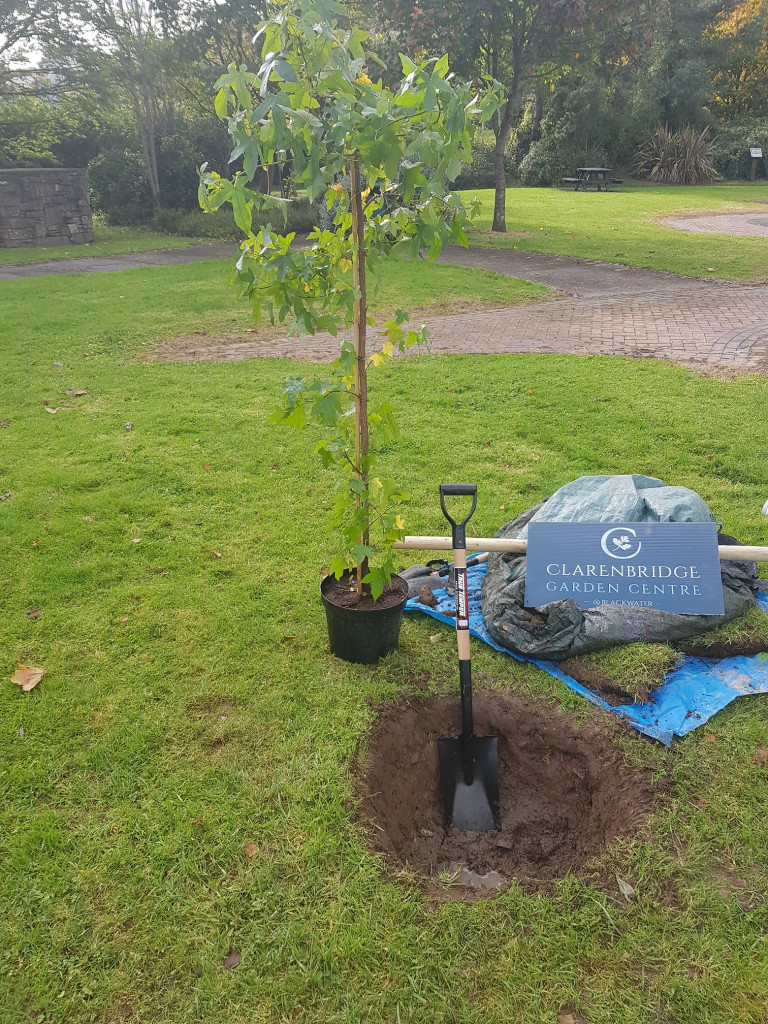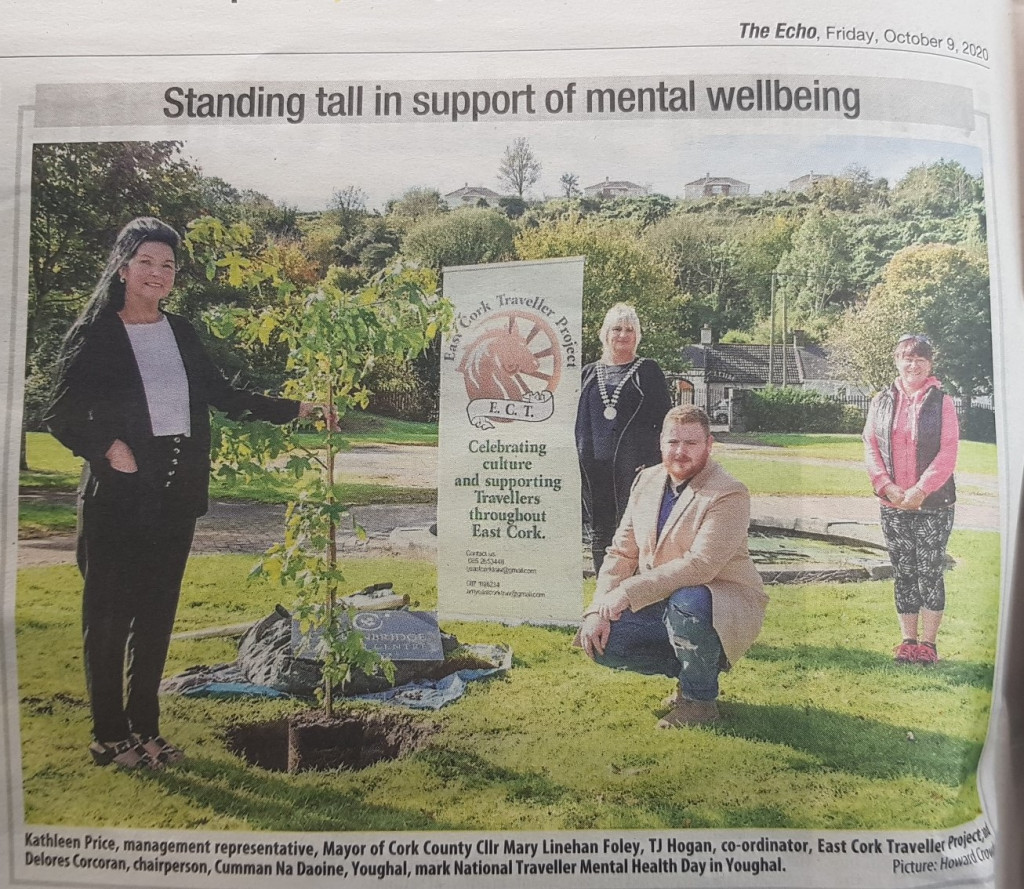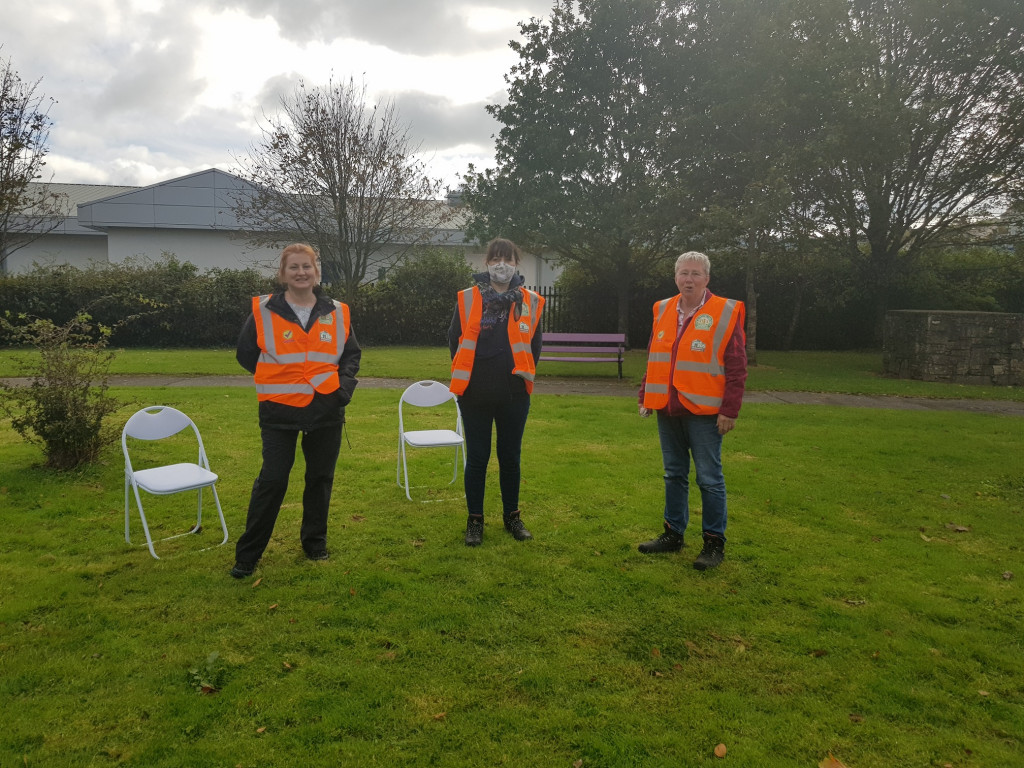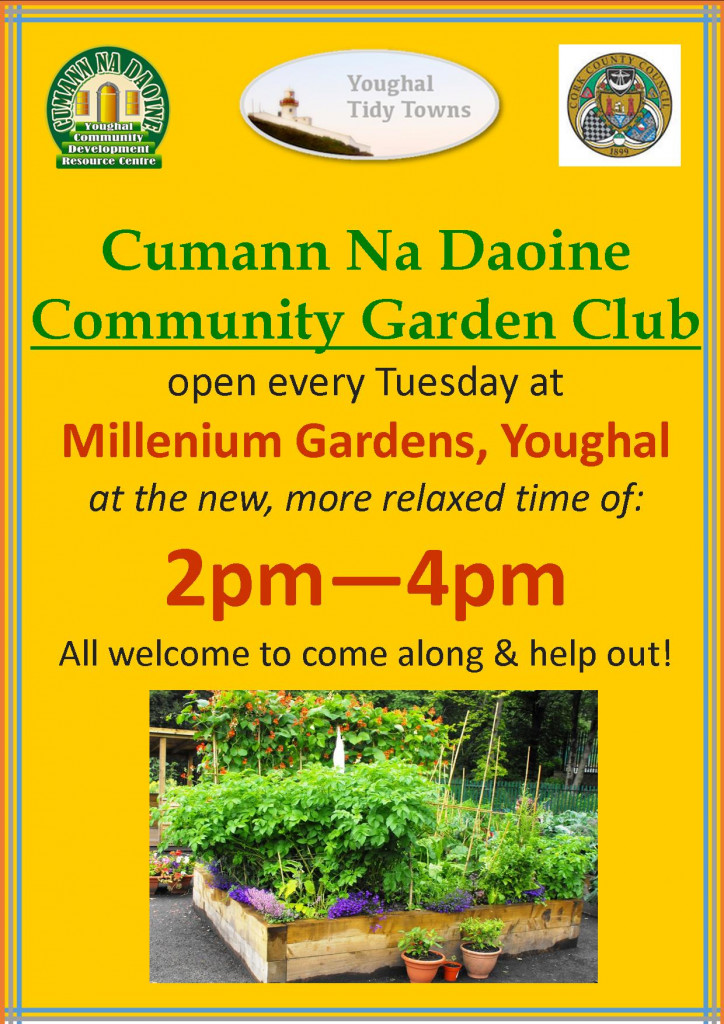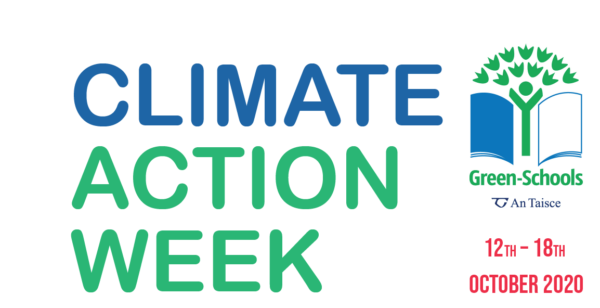WildWork: getting people engaged in wildlife and the environment
WildWork is a SECAD initiative to help you and help nature. By working together to sustain nature and biodiversity, we are creating something special to benefit our people, our communities and the places in which we work and live.
One activity of WildWork in Youghal is a series Nature Walks for older people, along with learning sessions for members of the Youghal Blue & Green Community Network.
The next Spring Chicks – older people’s – Nature Walk is on 30th July – see below.
Find out more about WildWork at http://www.wildwork.ie
The Old Quarry, Youghal: Keane Park with WildWork & the Spring Chicks Walkers
Out enjoying the sun, members of the Spring Chicks Walkers Group went for an explore with Karen Hoxton of WildWorks at the old quarry in Youghal. Locals will know it as Keane Park, in honour of Frank Keane’s ongoing hard work. Frank cleared the site at the turn of the century and has restored it into a wonderful site of flora and fauna, with a fresh spring and the walls of the old quarry tunnel (now collapsed) in evidence.
Karen provided the group with a butterfly net, which Catherine used to great effect so we could see a Meadow Brown butterfly close up…Karen also brought identification cards and checklists so we could identify what we found.
It was good to see that though the grass has been mown, large areas are left untouched to provide habitat for wildlife, and Karen stepped into the water to show us freshwater shrimp and tiny aquatic plants. Mona told us more about the walls, and the collapse of the tunnel back int he day…we dipped our hands into the refreshing spring overhung with ferns and shaded by sycamores.
This was such an enjoyable way to learn about solitary bees, reed mace, edible plants like ground elder – and poisonous plants to watch out for! We’re looking forward to the next Spring Chicks Walkers outing in the last week of August, when Karen will again guide us through the wildlife of the Slob Walk. If you’d like to join the Walkers Group, please call Hayley on 087 9890336 – all older people are welcome!
[spotting the nest of a leaf cutter bee]
Update on the Celtic Interconnector Project and opportunity to take part in Planning Process
We are writing to update you on the Celtic Interconnector project.
The Planning Application
A planning consent application has been submitted today Friday 09 July to An Bord Pleanála. This application will be open to statutory public consultation from the 19 July for seven weeks.
What happens now?
Please find a short Guide to Public Participation in the Strategic Infrastructure Development Planning Application Process on our website. This outlines what happens now and guides you as to how you can submit an observation or submission directly to An Bord Pleanála regarding this project. Please note observations or submissions will need to be sent directly to An Bord Pleanála.
We would like to thank you for your interest in this project to date. We appreciate all of the engagement we have had up to the present time and look forward to continuing to engage with you as the project progresses.
Michelle Walsh, Community Liaison Officer, Celtic Interconnector Project
Weathering the Changes: Stories for you to read!
Cumann na Daoine held the ‘Weathering the Changes’ event on June 16th for members of Cumann na Daoine’s (CnD) Spring Chickens Older Adults Social Club and Youghal Active Retirement Association (YARA).
The event, which was themed to Cork County Council’s Climate Change: Stories from Older People project, was attended by 15 people, and enabled a further collaboration with the Youghal Blue & Green Community Network and CnD Community Garden Club, who provided access to our venue in Millennium Park.
The session lasted for 2 hours: we had three ‘note takers’ (thanks, Maria Power & Sinead Goggin!) who encouraged participants to tell their stories, using the prompts supplied by the Council project along with some questions relating specifically to Youghal. We also had Frank Downs of YARA making recordings, of both snippets of conversation and full stories. We made the event into two sessions, with a break in between for sandwiches, juice and general chats – people were delighted to see each other after all this time! Thanks to CnD Cafe for providing the tasty snacks. After the event, notes were compiled and recordings transcribed: these stories were then edited by Community Worker Hayley into the collection below. Our local radio station CRY104fm assisted us in downloading the recordings and will help us to edit them also. We aim to air some of the stories on local radio, and to continue recording elements of the wider project as we go forward.
You can read the stories here: Weathering the Changes_Stories
The stories in the compilation are primarily from individuals (who we’ve chosen not to name individually) although there are one or two places where someone else’s comment has added to the story’s clarity or flow and has therefore been included. As the event was outdoors (luckily with the sun shining!) and in order to ensure Covid safety by not exchanging materials, we didn’t ask participants to write their own stories down.
‘Weathering the Changes’ also served to start up a broader Cumann na Daoine project for older people, which incorporates storytelling and crafts, along with a potential intergenerational theme added through a collaboration with Foroige Youth Service.
Youghal Blue & Green Network: Presentations
The Blue & Green Environmental Network has already had a number of interesting presentations – you can take a look at them on their blog page at www.youghalblueandgreennetwork.blogspot.com
There are presentations of tress, soil, marine and coastal actions, sustainable energy…and much more!
Sustainable Energy Communities: June Newsletter
Hello All,
We hope you are all keeping well and safe as we look forward to summer and some restoration of normality. This is our first newsletter of 2021 and we have a lot to share with you, including a reminder to enter the SEAI Energy Awards, Inspirational Energy Community category.
Best Wishes,
The Sustainable Energy Communities Team
SEAI Energy Awards launched
Closing date is Friday 18th June
Applications are now open for this year’s SEAI Energy Awards. The SEAI awards have a specific category for members of the SEAI Sustainable Energy Communities Network. The Inspirational Energy Community Award recognises the inspirational efforts of teams leading a sustainable energy community that go beyond the norm through a combination of ambition, passion and commitment. If you believe that your community is among these leaders, please submit your application online before the closing date of June 18th so we can celebrate your achievements
Emerging Sustainable Energy Champion
Our “Emerging Sustainable Energy Champion” award was introduced in 2019 to recognise the outstanding work that many young people do to further the cause of sustainable energy as a key pillar of climate action. This year we have added this award to our category list and you can now apply rather than be nominated. Applicants must be in fulltime education (primary, post-primary or 3rd level,excluding mature students) or of school / college going age
https://www.seai.ie/events/sustainable-energy-awards/
GAA Pilot
We have been working with the GAA to develop a pilot approach to develop a pathway for GAA clubs to review, monitor and manage their energy use. Hopefully this will mean in time that each of you that has a GAA club within your community will be able to bring them along your SEC journey and there will be clear supports for the clubs from this pilot. For more information on this please see : Green Clubs Programme https://www.gaa.ie/my-gaa/community-and-health/green-clubs-sustainability/
SEC Programme and Network
We have now reached over 500 SECs in the network, a fantastic achievement and we are delighted to see the continued and growing interest in the programme. Last year, during a very difficult year for all, we saw a huge increase in communities joining the network, with the addition of over 145 new members throughout the course of 2020. This year so far, we have registered over 75 new SECs (and counting), so we would like to take a moment to welcome all the new SECs who have joined the network over the past year.
If you want to check out who has joined the network in your area, have a look at our online Sustainable Energy Community map
Working with Local Authorities
SEAI, with the Atlantic North West CARO Office, and six local authorities, have come together through a pilot Memorandum of Understanding to further support SEC’s achieve their community energy ambitions.
While the SEAI grant is 100% funded, it is only paid retrospectively, and this can leave communities out of pocket while waiting for the costs to be reimbursed. This Memorandum of Understanding allows the Local Authority to fund the Energy Master Plan on behalf of the community and re-coup the cost directly from SEAI. The Local Authority support removes the financial barriers for SEC’s allowing communities to focus solely on developing a sustainable energy plan.
Achill Island SEC is the first Sustainable Energy Communities to avail of this bridge financing, and a further 8 SEC’s have availed of this since. The pilot is open to any local authority who wishes to join.
If your SEC is thinking of undertaking an Energy Master Plan but the upfront funding is a barrier, speak to your mentor about partnering with your local authority
Revised Energy Master Plan
In late 2020, we carried out a survey of SEC’s who had completed their EMP. Over 80% said the SEAI claim process was hard and 67% said our application process was difficult. Since then we have taken your feedback and improved our processes.
Some of the changes that have been implanted include
- A new streamlined application process that allows SECs to complete their application in one single form.
- We have removed the need to provide bank statements at application and the competency assessment is no longer mandatory
- For claims, we have removed the grant claim workbook and the SEC no longer need to provide a receipt of payment from the energy consultant
We would like to thank all the SEC’s who took the time to fill in the survey. These changes have helped us significantly reduce our approval process for applications and payments. If you’d like to share your feedback or suggestions with us, drop us an email to SEC@SEAI.ie
Renewable Electricity Support Scheme
We would like to formally welcome and introduce to you all, Gillian Baker, who has joined SEAI as our RESS Trusted Intermediary. As many of you will be aware, SEAI are the designated Implementation Body for the RESS Community Enabling Framework, which will provide access for communities to a range of supports and resources to guide them in developing and delivering their own renewable energy projects. The Trusted Intermediary is one element of this framework, initially as a role within SEAI, to be built out into a broader service over time. Gillian will act as the first point of contact for communities interested in Community RESS and with projects in development or in the pipeline and are looking for some support and guidance.
Gillian has extensive industry experience in the planning and developing of infrastructural projects across Ireland, with a particular focus on renewable energy developments. In her previous roles she worked closely with communities to ensure effective community engagement was kept to the fore in all project decision making, from initial inception stage right through to commercial operation.
If you would like to get in touch please drop us an email at CommunityRESS@seai.ie
Online Information Warehouse
Another aspect of the Community Enabling Framework is the development of an online information warehouse, which will provide a suite of online resources to guide and inform communities. One key element of this is the development of a Community Energy Resource Toolkit, which will consist of guidance modules across a number of different technology and project development areas. This toolkit will follow a similar approach to the Scottish CARES Toolkit. The first 3 modules are currently under development and are expected to be made available online, via the SEAI RESS webpage later this summer. These initial modules will cover Onshore Wind, Solar PV and Planning and Grid
RESS Expression of Interest for SECs
For any SEC who is interested in Community RESS and have a potential renewable energy project they are looking to develop, we would ask you to please fill out our RESS Expression of Interest form, where you can indicate your interest in RESS and tell us more about your project plans and support you may require along the way. You can find this form here.
For those SECs who had previously completed this form, please be aware that this has now been revised, and an updated version is now available online. This new version expands on the previous form, to gather some more detailed information where available so that we can ensure we have the most relevant information from you to be able to assist you in the most effective way on your renewable energy journey.
RESS Expression of Interest for SECs
In relation to RESS, SEAI will also have a role to play in supporting the Community Benefit Funds. All successful RESS projects, whether community-led or developer-led, must provide a Community Benefit Fund of €2 for every megawatt hour of electricity produced in the project to the local community living within the vicinity of the projects and pay this annually over the lifetime of the project. How the funds are to be distributed has been set out in the RESS Terms and Conditions and SEAI will have both a support function and an oversight and compliance function when it comes to these funds.
SEAI will be developing and managing an online Community Benefit Fund National Register, which will require project developers to register their projects online, as well as the associated Community Benefit Fund for that project as well. Developers will then be required to submit annual reports to SEAI on the Funds, detailing the contribution from the project into the Community Benefit Fund, how the Funds have been distributed and allocated across the community (ensuring this is in line with the obligations set out in the RESS Terms and Conditions), the projects which have been supported locally, and the impacts and benefits across the community as a result.
These annual reports are not only a regulatory requirement for developers, but also to provide clarity and transparency publicly as to how these Funds are being allocated across communities in Ireland and will build up a record of impacts over time to showcase the benefits and opportunities for local communities from renewable electricity generation and provide a platform for shared learning and best practice.
It is expected that project developers will be able to register their projects (and associated Community Benefit Funds) with SEAI from the beginning of July this year. This will require those projects successful through the RESS-1 auction in 2020 to register. The annual reporting on Funds will not be required until the end of the first year of commercial operation of these projects.
Good Practice principles for Community Benefit Funds
The Department of Environment, Climate & Communications (DECC) have developed a Good Practice Principles Handbook for Community Benefit Funds with input from SEAI. This Handbook sets out guidelines and recommendations on what is considered good practice when it comes to setting up and administering Community Benefit Funds, and it puts communities at the heart of the decision making in to how the Funds should be used within the community.
The Draft Good Practice Principles Handbook can be found here. Please note the public consultation period has now ended (as of 24th May) and responses are now being reviewed with the final version of the Handbook expected to be published by DECC in the coming weeks.
ESB Networks Resources for Communities
ESB Networks have recently developed and launched a new and extensive FAQ section on RESS questions and grid connection offers for community-led projects. This provides a lot of detailed information on the key topics and queries that many communities may have when looking to develop their own renewable energy projects, so well worth a visit. ESB Networks also developed a new guidebook for connecting a community-led renewable energy project to the grid network. This was published in December 2020 and provides a lot of valuable information. You can view this guidebook here
News from Youghal’s Blue & Green Community Network
Fridays for Earth webinar is on this Friday coming, June 11 at 7pm with Randal Plunkett of Dunsany Castle, Janet Laffey from the Green Sod and Paul Handrike from the Bee Sanctuary of Ireland. Join us and Cork Environmental Forum to talk about rewilding. https://www.eventbrite.ie/e/rewilding-giving-back-to-nature-tickets-156918422225
Also 2 other items:
- Another interesting webinar about tree guardianship is taking place this Thursday coming, June 10 at 7pm, free of charge. Two guests from Uganda and Honduras will talk about the efforts to halt the incursion of multinational companies into their forests to create palm oil plantations. Hear first hand about the tree protectors’ efforts and look at some short videos made by Trocaire about the threats to forests in Honduras. Free event, https://www.eventbrite.ie/x/voice-of-the-trees-webinar-tickets-157034356989
- The Voice of the Treesis a project that runs next Saturday, June 12 at four locations in Cork City and explores our relationship with trees and what trees mean to us through art, drama, movement and tree guardianship 10 to 4pm. Hosted by Creativity and Change and supported by Green Spaces for Health join us to appreciate some of the trees in our city. See poster below for more details and register here https://www.eventbrite.ie/e/voice-of-the-trees-tickets-156233712239
You can check out the Network’s blog here: https://youghalblueandgreennetwork.blogspot.com/
Youghal Blue and Green Community Network
welcome to the blog!
Youghal Blue & Green Community Network has launched its new blog account and invites you to participate and get involved. If you are interested in the environment, climate change, renewable energy, woodlands, trees, biodiversity, the coast, marine, nature and wildlife – this is the blog for you.
The Network, whose membership includes 12 local community groups and many individuals with an interest, meet every Wednesday evening (currently via Zoom) for sharing, presentations and collaborating on projects. Our blog will host information on the Network, give links to webinars, reports and events. All projects will be updated here and you will be welcome to participate and share your views.
Follow us on www.youghalblueandgreennetwork.blogspot.com
Youghal Blue & Green Community Network is supported by Cumann na Daoine Community Resource Centre, Youghal. You can also email the Network at blueandgreennetwork@gmail.com
[logo design Diarmuid O’Halloran]
Celebrating our Waters
With summer only around the corner, we’re delighted to tell you about a number of great initiatives which celebrate our waters and its rich aquatic biodiversity:
Source to Sea Video Series watched in National Schools across Cork (but also available for schools everywhere!)
The ‘Source to Sea’ video series which was recently launched is an education initiative developed by Scoil na Mara to bring awareness to water quality and some of the Irish biodiversity that depends on it. The series has been developed for primary school learners, best suited to 3rd – 6th class viewers, but accessible and fascinating for all ages. Over three episodes The Scoil na Mara videos bring viewers on an exploration of different river, estuarine and coastal biodiversity, highlighting the link between water quality, healthy ecosystems and our own well-being. The videos evoke a sense of wonder for the diversity of wildlife in our local areas and additional resources including worksheet exercises and suggested classroom activities are provided to reinforce key points and support more in-depth learning. The first of the videos will be launched on May 17th and the whole series is designed to be delivered over a three week period. All videos and material will be open-source and available via the Scoil na Mara YouTube channel Scoil na Mara – YouTube . The ‘Source to Sea’ video series has been specially developed by Scoil na Mara with the support of Cork County Council and the Local Authority Waters Programme as way of promoting water quality and biodiversity.
Launch of ‘Salmon Sanctuaries’ booklet
Have you salmon in your local river? Learn more about this treasure by viewing the new Streamscapes booklet, ‘Salmon Sanctuaries’, at https://bit.ly/3vkJVIU or HERE
The booklet was officially launched by Streamscapes on last Sunday the 23rd of May as part of their Biodiversity Week Events. Streamscapes is produced by Coomhola Salmon Trust Ltd., Bantry, Co. Cork, Ireland
Cork Harbour Festival 2021 launches with events on water, on land and on your screen 4-14 June 2021, Cork City & Harbour
Cork Harbour Festival returns this year with a packed programme of events on water, on land and at home on your screen. This year’s festival is an incredible achievement for festival and event organisers, as it presents 15 events online as well as 28 activities that festival goers can participate in around Cork City and Harbour.
Joya Kuin, Festival Manager,
“we are thrilled and incredibly excited to be one of the first festivals in Cork, and possibly in Ireland, presenting activities that people can physically participate in again. Of course, all event organisers will be following current government guidelines, but we can also guarantee that the diverse range of events and activities will bring great enjoyment and pure fun for those who join us and take part throughout the festival!”
See the full festival programme of events at corkharbourfestival.com. Pre-booking is essential for all physical events with a maximum 15 person capacity in line with current guidelines for organised events.
Information received from
Catherine Seale-Duggan, Community Water Officer
Mobile: 085 8085533
Local Authority Waters Programme / Clár Usici na nUdarás Áitiúil
Heritage funding for Youghal and East Cork
€40,000 for the repair & securing of the medieval town wall of Youghal and €8,000 to Cork County Council East Cork Municipal District to fund a virtual festival which will showcase Youghal’s unique built, natural and cultural heritage has been awarded by the Heritage Council of Ireland.
Conservation work in Youghal will include repairing damage to the Youghal Jail Steps – part of the Medieval Town Wall of Youghal (between the North Main Street and Ashe Street). The repair/securing of this critically important section of town wall, currently closed due to a collapse, will ensure the upkeep of this section of wall which is a ‘gateway’ to Youghal’s Historic ‘Raleigh Quarter’/Town Walls/Main Street. Also funded is St Mary’s Collegiate Church, under which a laser scan & 3D digital model which will inform conservation works and how they are prioritised.
On 13th May the Heritage Council announced €299,000 in grant funding for conservation work and interpretation initiatives under the Irish Walled Towns Network (IWTN).
Irish towns – seeped in history and with stories going back centuries – are embedded in the Irish folk memory and this funding will help protect and preserve the history and heritage of Ireland’s walled towns.
The IWTN was established by the Heritage Council in 2005 to preserve this vital part of our ancient past and exists to help these urban centres become better places to live, work and visit.
A walled town is a town that had walls and features like gates, towers, and earthen ditches built around it, to defend the occupants, and control the flow of people and revenue in and out of the town. They were also seen as status symbols reflecting wealth and influence. While some walled towns date back to the Viking period, the majority date from the Anglo-Norman / medieval period. However, there are some examples of towns that were walled in the 1600s.
Town walls and their associated features are now recognised as National Monuments.
Most walled towns have only sections of the walls remaining, however, the circuit of the walls usually mark and define the historic core of the town.
Full list of grant recipients under the IWTN available here:
https://www.heritagecouncil.ie/…/IWTN-Capital-Projects.pdf
https://www.heritagecouncil.ie/…/IWTN-Interpretation.pdf
Learn more about the work of the IWTN:https://irishwalledtownsnetwork.ie
Lots of Ideas in this month’s Heritage Newsletter!
Would You Like to Contribute to the Heritage Artefacts of County Cork Publication?
For many years Cork County Council’s Heritage Unit has each year been producing a new book on a topic of heritage within the county, from bridges to houses and churches to castles. In 2021, with the support of the Heritage Council, a publication on the Heritage Artefacts of County Cork is being undertaken. Archaeology is the study of how people lived in the past by examining the physical things they have left behind. These physical remains can be divided into monuments, things that are attached to the landscape, and artefacts, those things which are portable and typically are kept in museum collections. Following the successful publication in 2020 of ‘The Archaeological Heritage of County Cork’, it is now proposed to follow this up with one on the county’s artefacts. The study of artefacts can tell us much about how past societies, not only about their technological ability but also lifestyle, belief systems and how society was organised and functioned. Not every artefact will tell us all these things but it is surprising how much can be inferred from the study of objects long ago lost, discarded or carefully preserved over the generations.
Artefacts come in all shapes and sizes. Some are very valuable objects made of gold or silver and produced by masters of their craft. Others are very mundane objects commonly used in everyday life and easily discarded. Amongst the former are objects like the Cork Horns, the Garryduff Bird and St Lachtine’s Arm. Amongst the latter are broken shards of coarse hand-made pottery, simple flint tools and clay pipes. To archaeology all are equally valued as items that are part of our past and have their own story to tell, irrespective of their aesthetic or rarity value. Each one is part of the story of County Cork’s past and it will be the objective of this book to allow the selected items tell that story, to let “the mute stones speak.”
One of the key elements of each publication is the input from local groups and heritage enthusiasts. Past publications in the Heritage of County Cork Series have benefited hugely from a great number of public submissions including photos for use, stories, and indeed lists of recommended sites that should be featured in the book(s). With respect to the upcoming publication on the County’s Heritage Artefacts, the Heritage Unit of Cork County Council would be delighted to see high levels of engagement. To this effect local heritage societies, community groups and individuals are requested to get involved in the project by submitting any specific information/stories/photos of interest to Cork County Council by Friday 11th June 2021. The publication will set out to include and reference as many submissions as possible and for further information email corkheritage@corkcoco.ie or phone 021 428 5905/5935.
National Biodiversity Week 2021 (15-23 May)
National Biodiversity Week is taking place again this year, with events for the whole family to enjoy!
- The annual Biodiversity Photographer of the Year competition is now open for submissions. Send in your photos by May 31st to be in with a chance to win up to €500 in cash prizes! More info here
- A huge variety of events will be taking place throughout the whole week, from groups such as Coastwatch, Crann, Forest Friends, Hedgelaying Association of Ireland, Irish Peatlands Conservation Council and more! A calendar of events will be launched very shortly and keep an eye on https://biodiversityweek.ie/to find something that interests you.
- Join in the Backyard Bioblitz on the weekend of the 21st – 23rd. We have wildlife experts on hand to identify your finds! As a bonus, there’s also a chance to win a prize from the National Biodiversity Data Centre. More info here
- The Biodiversity Scavenger Hunt is now available to download.No printer at home? We have free postage! Created for children aged 4-12 (though all ages can enjoy them!), the Hunt gives an extra activity for the weekend so the whole family can get involved. Request postage by May 16th to ensure they are with you in time for the big weekend. More info here
Visit https://biodiversityweek.ie/ for more information on the above and further details
Explore Cork Tourism App
As restrictions lift and attentions turn towards staycations, Cork County Council has launched a unique, ‘one-stop-shop’ tourism app, featuring over 850 places to see and things to do throughout County Cork. The ‘Explore Cork’ app is the first of its kind by any Local Authority in Ireland and was developed following the success of the web-based ‘Rediscover Cork County’ GIS Tourism Map, launched by the Council last Summer. The free app, which is available in both the English and Irish languages, has replicated key elements of the web-based GIS map, but with additional functionality and user-friendly features. The ‘Things to Do’ section allows users to browse tourism activities from a range of 850 attractions and 18 categories, which can be filtered by areas of interest such as Beaches, Visitor Attractions, Heritage Sites, Islands, Arts & Culture and more. ‘Explore Cork’ shines a spotlight on each of the county’s main 23 towns, presenting local information and video footage to highlight the diverse range of tourism activities, amenities and often unfamiliar attractions within in each town and its surrounding areas. For those who prefer to discover the county on foot, a dedicated ‘Trails’ section offers extensive information on County Cork’s many spectacular walking trails. Another key feature of the app is the ‘What’s Near Me?’ function, which allows the user to identify nearby attractions within a radius of up to 100 km. Visitors can then generate directions to a location or activity of choice, enabling them to ‘Explore Cork’ and its many hidden gems at the touch of a button. As well as offering visitors an array of tourism activities, the app is linked to an extensive database of dining and accommodation options via the Pure Cork website.
Welcoming the launch of the unique County Cork tourism app, Mayor of the County of Cork, Cllr. Mary Linehan Foley commented,
‘I am proud to say that we are the only Local Authority in Ireland to develop such an all-encompassing tourism app, in fact, I believe this is the only app of its kind in Ireland. The visitor can get all of the information they need to plan a trip to County Cork, whether they are looking for things to do, trails, places to stay or dine, the ‘Explore Cork’ app has it all. It is incredible that County Cork has over 850 tourism activities to choose from. We will continue to develop the app and expand upon the range of attractions and categories, so we very much welcome comment and suggestions via the feedback section in the app’s menu.’
The FREE ‘Explore Cork’ app will be available to download on Android and Ios

Identification Posters – message from Leave No Trace Ireland
Leave No Trace Ireland are delighted to team up with The National Biodiversity Data Centre to co-brand three of their identification posters; butterflies, bumblebees and shield bugs. The stunning posters can be used to identify the exact species of Irish insect you find in your garden. We are really looking forward to using these resources in our Leave No Trace education programmes in schools across the country, on our Trainer and Awareness Courses, and to share them with our community. You can view and download the butterflies, bumblebees, and shield bugs posters on our website. – https://www.leavenotraceireland.org/identification-posters-nbdc/
New Issue of the Walled Town Crier Ezine
The Irish Walled Towns Network (IWTN) has a membership of over two dozen towns throughout the island of Ireland (North, South, East and West) and includes 4 towns in Cork. Three of these are in Cork County – Bandon, Buttevant and Youghal – and Cork City is also part of the Network. The Irish Walled Towns Network over the last number of years has supported a range of different projects and undertakings, including here in the County of Cork. To further promote the work of the ITWN, an Ezine, which is called the Walled Town Crier, is issued regularly and the April Edition, 2021, is available to read by clicking here . In this edition, there is a focus on biodiversity and the All Ireland Pollinator Plan with tips to encourage biodiversity suitable for all types of gardens and public parks. Digital methods and tools to enhance recording the heritage of our walled towns are also looked at.
Celtic Interconnector Forum and Spoonville Youghal
Celtic Interconnector Forum
Would you like to know more about, and participate in, the Celtic Interconnector Community Forum
As you may know, the purpose of the forum is to create a representative full project area group and to ensure that stakeholder and community views are understood and properly considered prior to and during project delivery. Community Forum members will also be invited to input on the design and implementation of the Community Benefit Fund which is a €2.4 million fund available to support community, sustainability and bio-diversity projects in the project area.
If you are a member of a community, sporting or social organisation in the Celtic Interconnector project area you are welcome to complete an expression of interest form available here. Forms are to be returned to us by midday on Monday 17 May.
If you are interested in participating, please see contact details below. Questions can be directed to the independent forum administrators at info@irishrurallink.ie or you can contact me directly at the number below.
We look forward to hearing from you.
With kind regards,
Michelle Walsh, Community Liaison Officer
Celtic Interconnector Project
T: + 353 (0) 85 870 4999
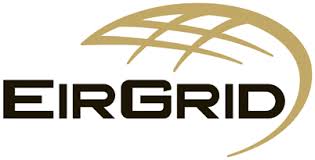
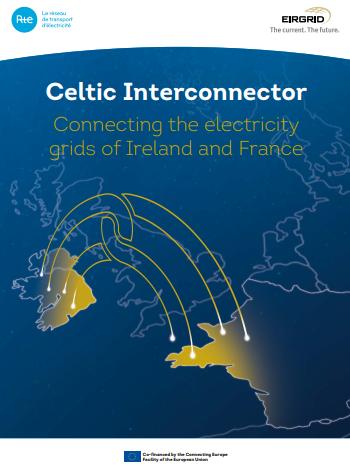 Spoonville: A Fun Project for Youghal!
Spoonville: A Fun Project for Youghal!
Find out more here:
https://www.facebook.com/YoughalSpoonville/?ti=as
Harpers Island & Grow it Forward Projects
Harpers Island project: video
Find out more about this project here:
Grow it Forward Growing Plan
Hi Growers,
We are very excited to share the first Grow It Forward growing plan. Every 2 weeks we will be sending you jobs for the week along with tips and tricks to get to harvest and to encourage you to pass on some seeds.
As part of this campaign, our growing plan will focus on growing 5 seeds – beetroot, carrots, oriental greens, peas and tomatoes. If you don’t have these seeds don’t worry, we will also be sharing general growing tips to help you get grow along.
Grow It Forward Checklist
What you need to get growing will depend on how you intend to grow your seeds. If you want to follow our growing plan step by step here is everything you’ll need;
- Seeds – beetroot, carrots, peas, oriental greens and tomatoes. Shop for seeds here.
- Compost/ General Fertiliser – make sure your compost is peat-free
- Sticks and String – for labeling and support
- Containers/Pots – any container or pot can be used to grow vegetables in, so let your imagination run riot! Pots, troughs, hanging baskets, window boxes, grow bags, wheelbarrows, old watering cans, tyres etc. Just make sure it has holes in the bottom for drainage.
- Growing Bed – If you don’t have healthy soil in your garden a solution to this is to grow in a raised bed. They don’t even have to be expensive as you can build your own! Learn how to build a raised bed here.
-
Part 1: Growing It Forward
Post Out Some Seeds
Whether you’re buying some seeds or you have some leftover from last year it’s important you share the lovage. By taking part in this campaign you’re helping us reach our goal of 500,000 people impacted by food growing.
This week we are challenging you to send some seeds out to friends or family to inspire them to get growing. Simply pop some in an envelope and send them on their way (make sure your seeds are separated and labelled!).
Before you send out your seeds make sure to take a picture using #GrowItForward and tag GIY!
-
Part 2: Get Sowing
This week is all about sowing. If this is your first time growing your own food you may not know what this means. Sowing is simply the process of getting seeds started. The action of scattering or planting seeds over land, earth, etc for the purpose of growth is called sowing. Before you get sowing it is important that you have good soil to sow in.
Our Top Sowing Tips
- Don’t be daunted by horticulture lingo or gardening jargon. All you need are seeds, soil and something to put them in.
- Overfill your containers/trays and bang them down to prevent air pockets causing your seeds to fall.
- Know the depth that each seed needs to be sown at to give it the best chance of germination. If you want more details on any of the 5 veg featured check out GIY’s Veg Directory.
- Cover your containers with compost and scrape the top off.
- Water gently so the seed doesn’t get washed away.
Our Hero Veg
Each newsletter we will be profiling one of our 5 veg featured in the Grow It Forward Seed Pack – this week it’s all about the tomato.
Few vegetables have suffered at the hands of the commercial food chain as much as the tomato. The homegrown tomato is a delectable treat – a meal in itself, best eaten fresh in the warmth of sunny windowsill for maximum effect.
Tomatoes do require a certain level of TLC (pinching outside shoots, watering, feeding, etc), but it’s definitely worth the effort.
Sowing Tomatoes:
- When sowing in pots make sure you have some good potting compost.
- Sow 2-3 seeds in a small pot. Sow seeds about 2cm deep. We will be pricking them out and potting them on later (don’t worry we will explain what that means when the time comes).
- Place pot indoors on a warm, sunny windowsill (make sure you are turning plant regularly so all parts are getting enough sun).
- Keep tomatoes moist to prevent them from drying out but also make sure not to overwater either.
-
Key Jobs For The Week
This week is all about sowing. Follow these instructions to get all your veg from pot to plate. Make sure to save some seeds for the next growing plan.
Sow In Module Trays/ Pots
Beetroot: Sow 1-2 seeds about 2cm deep, per module tray. If you wish to have a continuous supply of young beets you can sow every two weeks from April until July.
Sow Direct Into Bed/Container
Carrots: Carrots are best sown directly in the soil, as they do not transplant well. Sow carrots thinly at 1cm depth, in rows 15cm apart. You’ll need enough seeds to scatter them fully across the distance of your bed or container. Be patient as carrots can take up to three weeks to germinate.
Peas: Sow seeds 3–5cm apart at 2cm depth. Ensure the seed is in moist soil in order to absorb sufficient water for germination.
Oriental Greens: Sow the seed thinly (about a pinch per square metre) 1cm deep in rows 15cm apart. You will need to sow regularly if you want a continuous supply of salad – every 2 or 3 weeks.
-
Garden Tip Of The Week
Get To Know Your Soil
The secret ingredient to delicious and nutritious food is good soil. While it might seem mysterious and can be easily overlooked, understanding the health of your soil will set you up for success.
- Living, organic soil has a much broader range of nutrients than most soil in commercial agriculture. Taking the time to understand what makes soil healthy will pay off in the long run.
- Earthworms are a great indicator of soil health. If you don’t find any in a square metre, feed your soil with some organic fertiliser.
- The size of a seed matters again when sowing directly into the soil. Peas are more forgiving while carrots are quite temperamental.
- Mark out drills and trenches when sowing directly into the soil as they are there to stay.
- If you’d like to get weekly newsletters from this project, email tara@giy.ie

Online event ‘CATCH’, about trees with a great lineup of speakers on Thursday May 13 at 10am from SHEP Earth Aware
Éanna ni Lamhna will be giving the opening address to a one day event hosted by CATCH. CATCH, a project of Dr. Christie Godsmark stands for Communication and Action through Tree-planting for Climate-Health and is a project being run within the School of Public Health and the Environmental Research Institute at University College Cork.
The project aims to communicate climate change and its impact on human health and wellbeing. It is important to consider climate actions that have co-benefits for the environment, health and society. Register now on: https://www.ucc.ie/en/catch/online-event/
To read about CATCH go HERE
Climate Action Bill … workshops if you are interested below:
You are invited to a series of workshops to support you with making your submission to the Government’s Climate Action Plan Consultation.
Stop Climate Chaos have experts on hand to give you the information you need to make a great submission and make your voice on climate action heard!
Each workshop will focus on a different topic. You’ll hear some top-line suggestions on what to include in your submission on each topic. You will then get the opportunity to choose a breakout room to dig deep into the issues with a leading thinker, to ask questions and to share your expertise with others. After each workshop you will be provided with notes from the event to help you further with the submission.
This series of workshops will be useful in making individual submissions or in contributions you can make to the CEF submission. See link here to register: https://www.stopclimatechaos.ie/calendar/2021/04/20/climate-action-plan-consultation-workshop-series/
The workshops will be held on the following dates from 6pm – 7.30pm:
- April 20th – Electricity
- April 27th – Agriculture
- May 4th – Transport
- May 6th – Public Participation in Climate with Clare PPN
- May 11th – Homes and the Built Environment
- May 13th – Just Transition
You can join as many or as few as you like. You just need to sign up once to be kept in the loop.
Community Water Biodiversity Training
IRD Duhallow are seeking participants from Duhallow communities to participate in a LEADER Funded Local Water Quality and Aquatic Biodiversity Training course from April through to September 2021.
The key aim of this free training is to conserve and improve the natural resource potential of water courses in the region, promote sustainable water based activity, citizen science and community based bottom up approaches to water conservation and protection. This training will also include the creation of local ‘Water Biodiversity Actions Plans’ in catchments in and around Duhallow. We will do this by equipping individuals and groups with the knowledge and skills so that they can plan for water biodiversity in their local area. The course is “bottom up” in design and we encourage participants to share their own expertise and knowledge of their local rivers and streams.
This course is open to all who register.
This programme consists of 8 modules covering the following topics:
- Understanding Your Local Waterbody (how catchments work, the water cycle, the riparian zone – connecting land and water)
- Water Quality & Impacts (sources of freshwater supply)
- Citizen Science
- Practical Field Work Skills
- Water Biodiversity Action Plans
This training will enable community groups/ individuals to learn more about environmental stewardship and develop projects relevant to their local ‘waterbody’. A waterbody can be a stream, river, spring, pond, lake, (turlough, bay, estuary) etc. This training will commence in April 2021 .. exact dates to be confirmed per location.
An application form can be found at the following link: Events coming up – IRD Duhallow.
Spray Safe Pesticide Awareness Campaign from
Cork County Council
Cork County Council are running a weeklong Spray Safe pesticide awareness campaign from Monday 5th April. The campaign is targeted at the occasional user of pesticides, such as householders, gardeners, and small-scale farmers. Frank O’Flynn Senior Executive Scientist with the Council’s Water Quality Team says, “We want to give the occasional pesticide user the knowledge to make good decisions on their use, including assessing whether they really need to use a pesticide at all and if they do, to make sure they apply pesticides in a way that doesn’t cause harm to themselves, others or the environment.”
The campaign will give helpful tips on using, storing, and disposing of pesticides and on best practice when it comes to using a particular pesticide called MCPA on farms when spraying rushes. The campaign will be promoted through Cork County Councils Environment Facebook page and we are asking that householders, gardeners, farmers, and all occasional pesticide users take the time to make themselves more aware.
As the name suggests, pesticides are aimed at “pests”, but who decides who the pests are? The general definition is that a pest is any animal, insect or plant that is causing us harm or growing in the wrong place. The need to control some pests such as rodents and invasive species may be obvious, however the need to kill others such as bugs, slugs and dandelions may be less so?
The most common type of pesticides are weed or bug killers and these come in many different forms, mixtures and packaging. All pesticides contain toxic chemicals and ingredients that are dangerous to us, other plants and animals, water quality, biodiversity, and the environment in general!
While pesticides have a clear value in controlling some vermin and in treating invasive species such as Japanese Knotweed, in all other circumstances the first question that we want people to ask themselves is, “do I really need to use a pesticide”? Is what you are trying to control really a pest? And if you decide it is, then can you control it using an alternative to pesticides?
The key messages of the Spray Safe campaign will be;
- What are pesticides?
- Do I need to use them?
- Safe use
- Safe storage and disposal
- Using MCPA on a farm when spraying rushes
Welcoming the launch of this campaign, Mayor of County Cork, Cllr Mary Linehan-Foley said “During the past year we’ve all become more connected with our gardens and the countryside around us. It has made many more aware of the beauty of nature and its fragility. When it comes to using pesticides, it is certainly the case that we should all pause and think before we spray”.
For further information follow the campaign on the Cork County Council’s Environment Department Facebook page Cork County Council Environment Department | Facebook or check out the following video Spray Safe Pesticide Awareness – YouTube
Greening Our City & SHEP Earth Aware Events
The April & May talks in the Greening Our City series will take a broad view of “greening” (in line with the UN Sustainable Development Goals). The talks will focus on the approach of “Doughnut Economics” and its application at city level.
Tuesday April 27th at 2.30pm
Making City Growth Sustainable and Just: The Doughnut Economics Approach
Dr. Declan Jordan of Cork University Business School
Spaces are limited and booking is essential at: https://www.eventbrite.ie/e/seminar-6-making-city-growth-sustainable-and-just-the-doughnut-economics-tickets-149689664817
The River Bride campaign:
Save Our Bride Otters (SOBO) is a newly formed community group in the Blackpool area of Cork City. The OPW have been granted permission to do extensive work on the River Bride in the area of Blackpool village, including putting the last remaining open part of the river in Blackpool underground into a culvert. SOBO are seeking to take a Judicial Review in the High Court to overturn this recent decision of the Minister for Public Expenditure and Reform to allow the Office of Public Works (OPW) to do work on the River Bride. They will need to raise about €20,000 before the end of June in order to complete the initial phase of the Judicial Review.
This area is currently a bustling haven for wildlife, including otters, which are a protected species. SOBO contend that these works are unnecessarily expensive, and a better solution to prevent flooding in the Blackpool area could be achieved at a fraction of the cost by slowing down the flow in the river using nature-based temporary storage upstream. This would involve not destroying the current wildlife oasis in the River Bride, which is home to not just otters, but also trout, mallard, dippers and heron, among many other species, and would also create better habitats for wildlife upstream.
SHEP Earth Aware normally does not promote fundraising activities, this is the first time, but we feel the matter is very urgent and SOBO could do with assistance. Help them prevent this urban oasis from being buried under concrete, if you wish to support this effort please make a contribution HERE
Elders for Earth: Spirituality and the Earth Series:
This is the second in a series of talks hosted by Elders for Earth exploring issues such as eldering and earth activism from the perspectives provided by a variety of spiritual traditions. This month’s guest is Donal Dorr: Donal Dorr is a missionary priest and theologian who has spent many years facilitating workshops on ecology, spirituality and justice both in Ireland and in Africa. He is the author of many books on these topics, among them Option for the Poor and for the Earth (4th ed. 2016) and The Pope Francis Agenda (2018). His most recent book is A Creed for Today, which was published in 2020 by Veritas in Ireland and Orbis Books in the USA. The title of Donal Dorr’s talk is A personal view of a catholic through the lens of poetry. Wednesday April 21st at 7pm HERE
Protecting Otters: Wildlife News
Otters have been seen more widely during the pandemic than before – in part due to the lessening of human traffic. Some of you may recall ‘Ollie the Otter’ who became well known in Youghal due to his habit of coming into the town.
Ollie the Otter, Youghal. Photo Cork Beo
However well-loved this otter was, other otter populations are in danger.
The Bride river in Blackpool is in danger of being closed up completely by the Office of Public Works for flood schemes. A campaign is underway to protect the River Bride, Blackpool in Cork City from the devastating impacts of this proposed heavily engineered OPW flood scheme. 8 of the 11 otters identified in the city use this stretch of river, it’s so important for biodiversity – along with the mature trees in the area, the proposals would destroy the otters habitat. You can find out more about Save our Bride Otters campaign on their Facebook page. If anyone would like to support further, drop them an email to get on their mailing list: contact@saveourbrideotters.com
This recent article from Paddy Sleeman of UCC (available at https://www.rte.ie/brainstorm/2021/0121/1191111-otters-ireland-cities-town-rivers/?fbclid=IwAR0bfYiCcgKVLC48KN_c7qKUARl-hdttjK8Vwi-wm1Rx8A_mtyWLG-o75lM) sheds further light on these wonderful creatures.
Across Europe, the number of otters declined in the last century. In Ireland, they are still common, but rarely seen. In Irish cities, oddly, they are common. The cities are all on rivers, mostly estuaries, which is one of the best otter habitats, being rich with such prey as fish, eels and water birds.
Ireland’s urban otters are distinct from otters found elsewhere. They have darker coats and are very sexually distinct: the males are much bigger than females and, with practice, the sexes are readily told apart. Males tend to occupy the main river, and the females the smaller tributaries. In effect, females avoid the males.
Usually, top predators such as otters are scare in urban areas. Where predators exist, they are indicators of a functioning ecosystem even if a slightly odd and unexpected one. Apart from indicating intact biodiversity, the other good news for conservation is that people who live in urban areas are more likely to be concerned with the decline in biodiversity, as they see less, which makes urban areas good recruiting grounds for conservationists. Otters are a useful subject for studies to connect people to conservation of their local small river.
From RTÉ lyric fm’s Naturefile, a look at the otter, one of Ireland’s most charismatic native mammal species
Dublin is a city of rivers and one of these is the River Owendoher, which is an English version of the Irish Abhainn an Dobhair or river of the otter. It is well used by otters to this day because its steep sides make access for people and their dogs difficult. Otters like being away from local human disturbance.
I participated in a survey of otters in Dublin in October 2018. I recall hearing the rumble of trains in Heuston Station, while walking along the River Camac from Kilmanham. It felt like changing from being a hunter to being hunted, with the chill of fear.
Finding otters in urban areas like Cork is like discovering a jewel in mud
While common in Dublin and Limerick, otters have been most studied in Cork. There 11 known otters in Cork City, identified by DNA extracted from spraints (otters’ droppings). Of these, eight use the river in the Blackpool area, making the area important.
Volunteers searched the banks of the river at Blackpool to record signs of otters. This meant wading into a cold, often rapid flowing, river, in all weathers. Over the course of a year, the core habitat at Blackpool was searched each season for three days and each spraint or other otter sign, photographed and uploaded. Astonishingly, there was fresh spraint found in all seasons, but the majority were found in summer. They are mainly nocturnal and the best time to see them is at dawn or dusk.
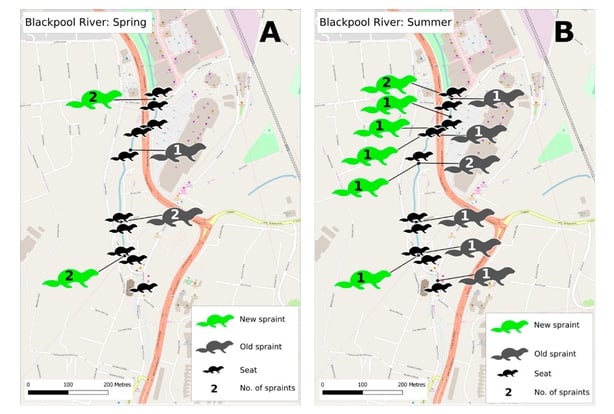
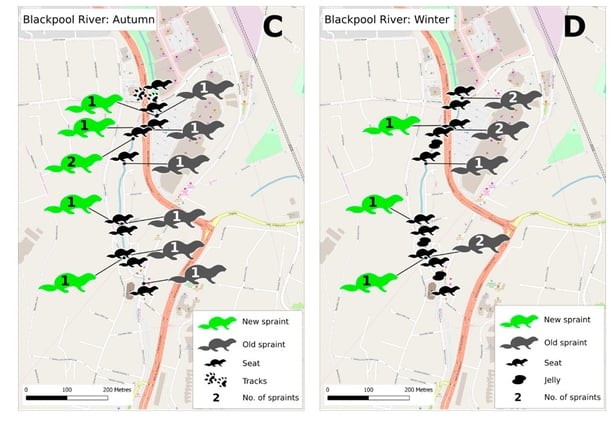
Blackpool is important as there are threats to cover over the river and turn it into what would effectively be a large drain devoid of most ‘normal’ freshwater life. This is planned as a flood mitigation measure.
Why is Blackpool so well used by otters? Firstly, there are lots of fish, but also water birds. There are also underpasses for them which appears to save them from being killed on the roads there. The district around UCC where the River Lee splits in two is also well used by otters. Like in Dublin, areas that humans find difficult to access are where most otter activity is focused.
Finding otters in urban areas like Cork is like discovering a jewel in mud. With a little training, they can be detected via their spraints. Better still, you can set up camera traps to take a photograph of the pooper. Detecting otters in urban Ireland is the equivalent of seeing dolphins cavort on an Atlantic horizon or wild animals migrate across the plains of East Africa. This self-initiated conservation initiative connects individuals with biodiversity rich habitats, such as small rivers, in their own back-yard. But be careful as camera traps can be stolen. The fact that otters tend to use places where people do not venture helps.
From RTÉ Radio 1’s Mooney Goes Wild, Donal Glackin joins the Irish Wildlife Trust as they conduct a survey of otters in Galway city
There is a belief that otters indicate clean water; for example, their return to parts of England is said to show that water-ways have been ‘cleaned up’. But this does not stand up to close examination. Otters commonly used Cork’s waterways where 59 million litres of raw sewage was put into the River Lee every year before the mains-drainage scheme. What determines where otters can be found is prey (especially fish) rather than clean water.
Are Cork’s otters coming in from the surrounding areas or are they ‘local’? Family groups of otters including cubs have been seen, suggesting that there are otters reared within the city. This suggests there are individuals that specialise in this habitat. Pana is Cork slag for Patrick Street which curves around following the river which is without doubt used by otters, so we now have Pana otters.
Stories from the Waterside
A new website www.storiesfromthewaterside.ie has been launched to share Stories from the Waterside, collecting stories about people and their connections to water from all around Ireland. As an island nation the sea surrounds us, and our landscape holds an intricate network of natural waters. Our rivers, lakes and coasts are some of our most beautiful places, forever changing with the seasons.
The Local Authority Waters Programme (LAWPRO) launched the Stories from the Waterside competition during Lockdown in May 2020 in partnership with The Heritage Council and The Heritage Officer Programme, Inland Fisheries Ireland and Waterways Ireland.
The competition seemed to tap into public mood at the time as people reflected on fond memories of places near water and how things used to be. These stories are deep-rooted in Irish mythology, legends, and folklore, having inspired countless stories through the ages. Undoubtedly, nature is at its best where there is water, and these places relate to countless memories and stories. As we continue to change our landscape, many of these stories and tales risk being lost. Stories from the waterside seeks to capture these stories and record them for posterity.
The competition received over 470 stories from people right across the island of Ireland, and even further afield from Irish diaspora. They included water themes involving wildlife, fishing, heritage, traditions, crafts, and ways in which nature can inspire the imagination and replenish one’s sense of wellbeing. This new website is a celebration of these stories and we hope that you, the reader, enjoy them.
A special thanks to all those who took the time to share their wonderful stories, for you have truly captured the value and magic of Ireland’s natural waters. This website will be a valuable resource for future generations to access these stories into the future.
Cork County Council’s Local Studies Section Podcasts
In recent months Cork County Council’s Local Studies Library has been undertaking a range of different podcasts covering many different aspects of history, including a new podcast on St. Patrick – a fitting podcast for this time of year. Previous podcasts range from Christmas Traditions and Witches to Henry Ford’s Cork connection, St. Bridget and Genealogy/Family History. To find out more visit https://www.corkcoco.ie/en/library-online/library-podcasts or email localstudieslibrary@corkcoco.ie. The St. Patrick Podcast can be accessed directly at https://soundcloud.com/user-500658861/st-patrick.
Spirituality and the Earth: series of talks from Elders for Earth
SPIRITUALITY AND THE EARTH
SHEP Earth Aware is delighted to let you know about a new monthly series of (Zoom) talks on SPIRITUALITY AND THE EARTH that is being organised by Elders for Earth.
Elders for Earth is a part of SHEP Earth Aware, with its own separate mailing list and is open to adults of any age who consider themselves Elders. It has a particular interest in intergenerational justice and in what it means to be an Elder at this time when the earth is facing multiple crises of climate change, biodiversity loss, inequality, and poverty. (For more information and for joining as an Elder see the website https://eldersforearth.ie )
The new series will involve speakers from a wide range of spiritual traditions, with each giving a personal view from their own tradition of issues relating to spirituality and the earth.
The opening talk will be on Wednesday 24th March at 7.00 pm.
The speaker will be Dr. Neil Deuchar, a retired psychiatrist and an ordained interfaith minister.
The title will be Eldering, Earth and Spirituality: A Personal View from an Interfaith Perspective.
(See attached flyer for more details.)
Registration essential. You may register HERE OR FROM THE FLYER
(Note: the talks will normally be on the 3rd Wednesday of each month, but because of St. Patrick’s Day this talk will be a week later, on 24th March.)
Thank you
Elders for Earth
Native Irish Woods: Fridays for Earth
Native Irish Woodland webinar: Friday’s for Earth
This Friday’s webinar of Friday’s for Earth (March 12) is going to be one of those ones you simply can’t miss. If you have time in advance of Friday we recommend you watch Call of the Forest, you can rent or purchase this documentary here. https://vimeo.com/ondemand/calloftheforest
Our special guests are Andrew St Ledger, founder of the Woodland League. Andrew features in the documentary and is a compelling, passionate speaker on all things related to Irish Ancient Woodlands. Why is only 0.2% of this country native woodland, what happened to our woodlands, what is happening now to establish woodlands, is it enough, is it being done properly, what can we do, you and I to change the dire statistics?
Tony Lowes from Friends of the Irish Environment will talk about incentivising farmers to convert scrublands into native woodland, he will shine a light on carbon credit offsetting, what is the biomass industry about and what are the consequences.
Join Native Irish Woods for what promises to be a riveting conversation, Friday March 12 at 7pm.
Register HERE: https://www.eventbrite.ie/e/native-woodlands-biodiversity-climate-and-culture-tickets-143472729797
image Irish Wildlife Trust
SHEP Earth Aware: webinar and links
Put the date March 10th in your diary! The Environment Research Institute and SHEP Earth Aware are co hosting a webinar with guest speaker Peadar Kirby: Beyond Capitalism, Mapping an Eco Social Future, 3.00 to 4.15pm. To book your place register HERE
Thanks to Caroline Robinson for this article: http://sustainablefoodtrust.org/articles/are-glyphosate-based-herbicides-poisoning-us-and-the-environment/ Is it not time for us to demand that the spraying of glyphosate and all other harmful chemicals is stopped for once and for all? Why – to protect our health, to protect our biodiversity.
If you live in an estate you can ring the contractor or council to request they stop spraying Roundup; ask your neighbours to do the same. If your child plays in a park or on a pitch, ring the authorities to persuade them to stop spraying harmful chemicals – you can send them the article above. If you have a farm, stop spraying those chemicals! Imagine if Cork became a glyphosate free city…
Another date for your diary is March 12th. Fridays for Earth 7-8.30pm will explore the topic of native Irish woodlands with special guest Andrew St Ledger who was interviewed in the film Call of the Forest and our second guest is Tony Lowes from Friends of the Irish Environment who will ask “What sort of forests should we be spending money on; can big CO2 emitters buy their way out of debt?” Link can be had by contacting SHEP (details below)
In the meanwhile we recommend you watch the film Call of the Forest available here to rent or purchase https://vimeo.com/ondemand/calloftheforest
SHEP Earth Aware
Find out more about SHEP Earth Aware at https://www.socialandhealth.com/shep-earth-aware/
____________________________________
Gardening: Ten jobs to do in February including planting ‘apples of love’
- Tackle early tomatoes
Did you know that tomatoes are also known as ‘pommes d’amour’ or ‘apples of love’? Late February is a great time to sow seed of these heat-loving tender annuals for planting out into the glasshouse, polytunnel or a sunny, frost-free porch in late spring/early summer.
For best results, use an electric propagator set to an optimum temperature of 21°-23°, but if that’s not an option, then a bright, warm windowsill will do the trick. Use a good-quality seed compost, clean pots and sow very sparingly, resisting the urge to sow gazillions of seed (there’s nothing sadder than the sight of a potful of unwanted tomato seedlings). Bear in mind that your baby tomato plants will need high natural light levels and protection from cold draughts and chilly nights over the coming months to stop them becoming leggy or suffering a sudden check to their growth. But don’t mollycoddle them too much by placing them in a very warm room as this will only encourage the production of soft, weak growth.
Recommended online seed suppliers include Cork-based organic seed producer brownenvelopeseeds.com; Sligo-based greenvegetableseeds.com; Dublin-based mrmiddleton.com; Galway-based seedaholic.com; UK-based kingsseeds.com and all good Irish garden centres. Recommended varieties include Sungold, Maskotka, Stupice, Costoluto Fiorentino and Santonio.
- Pot-on perennials
As long as the ground isn’t frozen or waterlogged, late February is an excellent time to lift, divide and then either replant or pot-on established clumps of many different kinds of perennials as well as to plant new purchases. When lifting, dividing and replanting established plants like this, always make sure to check for any invasive perennial weeds such as creeping buttercup, scotch, bindweed and ground elder whose root systems might be concealed within the clumps. Use a garden knife or a hand-weeding tool to carefully remove these weeds to prevent them from recolonising freshly cleared ground.
- Sow leeks
If you have a glasshouse, polytunnel or sunny porch, then it’s well worth sowing leeks under cover and in gentle heat (14°) this month for pricking out and then transplanting outdoors in late spring as young transplants. Recommended varieties to grow from seed at this time of year include Zermatt; Porbella; and Hannibal. See above for recommended online seed suppliers.
- Get to grips with dahlia tubers
Exuberantly beautiful, entirely edible, impressively long-flowering and available in a glorious range of colours and heights, dahlias are one of the brightest and most beautiful stars of the summer and early autumn garden. Now is an excellent time to order their tubers (the plants’ plump, fleshy root systems) while stock of hard-to-get/fashionable varieties is still available. Recommended online suppliers include Dublin-based mrmiddleton.com, all good Irish garden centres, and UK-based Peter Nyssen (peternyssen.com) which has cleverly overcome the problems of post-Brexit delivery to the European Union by shipping from its Dutch depot.
Late February/March is the perfect time to pot the tubers on (use a good-quality multipurpose compost and make sure to label each pot) before placing them in a bright, frost-free place to bring the plants into early growth (early growth means early flowers). They can then be planted out in your garden/allotment or into pots outdoors in late May. Alternatively, store your dahlia tubers in a cool, dark, well-ventilated, frost-free place until it’s time to plant them out directly into their final growing positions in the garden (late April/early May). These tubers will be slower into flower than their potted-on equivalents but it’s less labour-intensive.
Many kinds of easy-to-grow hardy-flowering annuals, such as cornflowers, can be raised from seed sown at this time of year.
- Sow easy-to-grow hardy annuals
Many kinds of easy-to-grow hardy-flowering annuals can be raised from seed sown at this time of year (under cover and with gentle heat) for pricking out into trays/modules. They can then be transplanted out into your garden or allotment in late spring where they will give months of colour and scent as well as food for visiting pollinating insects. Examples include sweet pea (Lathyrus), Ammi, Calendula, larkspur (Consolida), Orlaya, Cerinthe, cornflowers (Centaurea) and snapdragons (Antirrhinum), all of which also make excellent cut flowers. Recommended seed stockists include all good Irish garden centres plus specialist online seed suppliers such as seedaholic.com and b-and-t-world-seeds.com.
- Prune winter-flowering shrubs
Once they’ve finished flowering, it’s time to prune back many different kinds of winter-flowering shrubs including winter honeysuckle (Lonicera sp), Viburnum x bodnantense and V farreri and winter jasmine. Many late summer-flowering shrubs can also be pruned this month, including the butterfly bush Buddleja davidii, perovskia, romneya, potentilla, fuchsia and caryopteris, all of which flower on new growth. February is also the time to hard-prune certain types of the ornamental climbing plant known as clematis including varieties of C viticella, Clematis texensis, some late, large-flowered kinds (eg C Jackmanii, Comtesse de Bouchaud and Perle d’Azur), and herbaceous species of clematis such as C recta, C integrifolia and C heracleifolia. For detailed instructions on pruning clematis, see rhs.org.uk. Always wear gardening gloves to protect your hands when pruning and use a clean, sharp secateurs or loppers before finishing off with well-rotted organic mulch around the base of the plant, making sure to keep it from directly touching any stems as this could cause later problems with disease.
- Indulge indoor plants
This is a great time of year to give any indoor plants some TLC by gently removing/cutting away any dead foliage or faded flowers and then using a damp, clean cloth to wipe down dusty leaves. If you notice obvious signs of insect pest infestation, use a homemade spray made with a drop of washing-up liquid, a teaspoon of vegetable oil and four fluid ounces of warm water. If that doesn’t work, gently spot-treat using a cotton bud dipped in surgical spirit. Spring is also the best time to pot-on or repot any houseplants that have outgrown their containers or are badly in need of fresh, nutritious compost, something that ideally should be done every two years to ensure healthy, vigorous growth.
- Order early for summer lillies
Wondering about ways to make summer arrive just that little bit earlier this year? Then a potful of your very own homegrown lilies is just the thing. Order the large, fleshy bulbs this month (you’ll need roughly three to five bulbs for a 30cm diameter container).Then pot them on (use a deep container and a soil-based John Innes compost, mix in a sprinkle of granular fertiliser, plant them pointy-end up and leave 5cm between each bulb) before placing the container in a cool, bright but frost-free spot.
Initially, water only if the compost feels dry to the touch as lily bulbs are prone to rotting when left sitting in cold, wet compost. But once you see obvious signs of growth (green tips pushing through the surface), gradually increase the amount of watering so that it’s slightly moist but never sodden. To really speed the process up and force the bulbs into very early flower, you can move the pots into a warm, bright room once the first new, green shoots appear above the surface. Lily bulbs are available to order from all good garden centres including Kildare-based johnstowngardencentre.ie.
Broad beans like a fertile, free-draining but moisture-retentive position and an open spot.
- Broad beans for green-fingered kids
Looking for some green-fingered ideas for your children to enjoy? Growing broad beans from seed is something that even very young children will find easy and fun. Each seed is Jack-in-the Beanstalk large and easy to handle while they can be either sown directly into the ground at this time of year, as long as the soil isn’t sodden or frozen, or – my preference – sown into individual small pots under cover for hardening off and then planting out in March (broad bean plants are surprisingly hardy). Varieties suitable for sowing at this time of year include Gardener’s Choice, Bunyard’s and Witkeim. Broad beans like a fertile, free-draining but moisture-retentive position and an open spot.
Initiating the ‘Blue & Green Community Network’
In the last quarter of 2020, CnD initiated an exciting new development by meeting with ‘local experts’ who are involved in local community groups, have particular skills and experience and who are passionate about the environment, coast and eco-systems. Ten people initially agreed to network online, share information and ideas and collaborate where possible. This Network, is in its infancy and is currently concerned about Climate Change, the Environment, Biodiversity, Marine Life and Nature. The Network meets via Zoom every Weds evening from 8pm to 9pm. Meetings are currently chaired by Maria Power from Cumann na Daoine. Information in relation to funding, webinars and studies are shared and invited speakers give presentations every few weeks. The following is a summary brainstorm of the work the Network is interested in pursuing in 2021:
| ENVIRONMENT | COAST | CLIMATE | OTHER |
|
Community Garden |
Coastal Walking Tours |
BCOMAR survey UCC* |
Visits to other projects |
| Biodiversity | Fishing Families Story Board | Climate Change video making | Healthy Parks and Beaches |
| Foraging Trips | Otter Awareness Trip | Linking with Earth Aware | Create high quality online presence |
| Ballyvergan and Slob habitats | Clean Coast Awareness | Carbon and Energy Audit | By December 2021, develop a Strategy and Action Plan |
| Less Plastics Ireland | Coast Watch Survey | Community Resilience – Rising Sea Levels
Cork County Council |
Slí na Slaínte |
| Bird Watch Ireland | Oyster Beds | Eco-Tourism and Economic Opportunities
(Lady Delta) |
|
| Tree Audit | Creating a Natural Woodland | Support Network development, admin and funding | |
| Rewind Research UCC | Protected Marine Area
|
||
| Water & Air Quality | Boardwalks
|
||
| Connect with the Greenway | Living Shoreline Projects |
The Blue & Green Community Network works with the following partners:
Cork County Council, SECAD, Water Ireland, Environmental Protection Agency, *UCC/ Building Coastal and Marine Resilience (BCOMAR), EirGrid, EarthAware, Cork Environmental Forum, Links CoOp, Youghal Tidy Towns, Youghal Community Health Project, Youghal Clean Coast Group, Youghal Active Retirement, Conservation Ireland, Youghal Community Garden and Cumann na Daoine.
Recycling: what can be recycled and what happens to it!
Thanks to www.citizensinformation.ie
There is a wide range of services and facilities to recycle domestic waste. As well as reducing the volume of waste going to landfill sites, recycling and composting your domestic waste helps to minimise charges for waste collection.
Many of the items used in the home can be recycled. The benefits of recycling include a cleaner environment, the safe disposal of hazardous materials, greater awareness of excess packaging and a careful approach to the use and re-use of materials.
Many products carry international recycling symbols that help to identify how they can be re-used and/or disposed of safely – see ‘Recycling symbols’ below.
How do I recycle?
There are several ways of arranging to recycle waste. You can take it to a recycling facility or use a kerbside collection (if available). For organic waste, you may choose to compost it yourself – see ‘Composting’ below or use a kerbside collection. Many recycling facilities accept bulky organic waste as well.
There are 3 types of permanent recycling facility: bring banks, civic amenity sites and recycling centres. You can find out what is available in your area from Repak, on mywaste.ie or from your local authority.
See Waste & Recycling Centre Brochure here: Cork County Council Waste Recycling Centres
Bring banks are unstaffed collection points for recyclable materials like glass bottles, drinks cans and food cans. Some bring banks also have collection bins for unwanted clothes.
Civic amenity sites are similar to bring banks but can accept a larger variety of items. They are purpose-built, are staffed and have specific opening hours. In general they accept paper, cardboard, plastic and glass bottles, drinks cans and food tins, textiles and footwear, electrical equipment, fluorescent tubes, waste oil and DIY waste. Some also accept garden waste and Christmas trees.
Staff at civic amenity sites can provide advice and information about recycling and they may have home composting bins for sale.
Recycling centres are also staffed and gated and have specific opening hours, but accept a smaller variety of items than civic amenity sites. In general they do not accept very bulky items. They are not custom-built and tend to be located in existing sites such as local authority depots.
Again, staff can provide advice and information about recycling and they may have home composting bins for sale.
Kerbside collection of recyclable waste is often known as a ‘green bin’ collection. Recyclable materials include plastic bottles, glass bottles, drink cans, food tins, newspapers or magazines, and cardboard
Most areas now have a separate bin collection for organic waste – often called a ‘brown bin’ collection. Read more on brownbin.ie.
Composting is the breakdown of organic material like kitchen or garden waste by organisms that convert it into an earth-like mass, which can then be used as a soil conditioner. Most garden waste and much kitchen waste can be composted – see our document on composting. Some civic amenity centres accept organic materials, or you can use the ‘brown bin’, if available. Many local authorities sell home composting bins at subsidised rates.
What can I put in my recycling bin?
A new list of material has been agreed for the household waste recycling bin, as follows:
Paper and cardboard: letters, brochures, cardboard boxes (flattened), egg boxes, cardboard centres from toilet roll and kitchen roll, newspapers, ‘Tetra Pak’ cartons for juice or milk
Rigid plastic (washed and dry): plastic drink bottles, plastic cleaning bottles, butter, yoghurt and salad tubs, plastic trays for fruit and vegetables, plastic milk containers, plastic bottles for liquid soap or shampoo
Tins and cans (washed and dry): soup cans, pet food cans, drink cans and food cans
All items should be clean, dry and placed loosely in the recycling bin.
For more details on what can and cannot go in your recycling bin, see mywaste.ie.
The Irish Waste Management Association has published answers to common questions on recycling household waste (pdf).
What can I bring to a recycling facility?
A wide range of items can be accepted at recycling facilities. Check with your local centre, as there can be considerable variation in what they accept.
All materials should be clean, to avoid contamination – wash out bottles, cans, yogurt pots etc. before recycling. The items most commonly recycled are:
- Glass bottles and jars – recycle lids/caps separately
- Paper (newspapers, magazines, telephone books, office paper, junk mail, comics and light cardboard)
- Drinks cartons (for milk, juice etc.)
- Aluminium (soft drink and beer cans, foil) Try to roll your foil up into a hand-sized ball so that it can be picked up by sorting machinery
- Plastic bottles and cartons
- Food tins (fruit, vegetables, pet food)
- Plastic bottle tops, metal and aluminium lids
- Textiles (clean clothes, bed linen, towels, coats and jackets)
- White goods (washing machines, cookers, dryers, dishwashers, fridges)
- Batteries (also collected in shops and supermarkets)
Items that cannot be accepted for recycling
- Crystal glass, Pyrex, television tubes, opal glass, (that is, alcohol bottles where a large amount of foil is glued to he bottle) and car windscreens
- Porcelain, pottery, stones and ceramic tiles
- Carpets and rugs, cushions or mattresses
- Laminated or waxed papers like paper cups
Hazardous waste
Many household products contain substances that are potentially harmful to the environment. They include medicines, aerosols, bulbs and fluorescent tubes, polishes, adhesives, household cleaners, drain cleaners, solvents, weedkillers and fertilisers. Some of these items can be brought to a civic amenity centre, where they can be recycled or disposed of. Pharmaceutical drugs (such as painkillers), medical waste (such as syringes or surgical gloves) and containers for pharmaceutical drugs should be returned to your local pharmacy, which can dispose of them properly. Some local authorities organise mobile collections, where hazardous waste can be left at a central point. Contact your local authority for further details.
Recycling symbols
The most common recycling symbol on products and packaging is the mobius loop – three arrows in a circle. This means that a product is either recyclable or has some recycled content.
Another common symbol is the Green Dot – a pan-European symbol that appears under licence on product packaging. The Green Dot is not a recycling symbol, it does not mean that the packaging material can be recycled, or that it was made using recyclable content. It is simply a mark to show that the supplier is committed to protecting the environment by funding the recovery and recycling of packaging waste.
Rates
Recycling services provided to the public are mainly free of charge. However, civic amenity centres or recycling centres may charge for certain items or for large quantities – check with your local centre. A charge for kerbside collection may also be included in your domestic waste charges – check with your service provider.
Most local authorities also provide home composters at subsidised rates.
Where to apply
For details of kerbside collections in your area, check your local authority’s website.
To find a recycling facility, you can use Repak’s search, check mywaste.ie or check the local authority’s website.
Websites such as Free Trade Ireland enable people to find new homes for unwanted items.
What happens to recycled items?
Batteries
Lead acid batteries (from cars, trucks, boats, tractors, etc.) are made of plastic and contain dilute sulphuric acid and lead. During the recycling process, the batteries are crushed, the acid is drained off and neutralised and the plastic and lead are compacted and baled for recycling. Button batteries (cameras, hearing aids, watches, computers and calculators) can be recycled using a thermal process. Domestic rechargeable batteries (mobile and cordless phones, laptops, power tools and cordless appliances) can be also recycled using a thermal process, which reclaims the cadmium, nickel and iron. The reclaimed cadmium is used to make new batteries while the nickel and iron are used to make stainless steel.
Glass
Glass must be sorted according to colour to avoid contamination. It is crushed and turned into ‘cullet’. In the making of new glass, cullet can be up to 40% of the raw material. This amounts to significant savings in raw materials and energy needed to melt the glass.
Vehicles
Vehicles can be dismantled, stripped of any valuable materials and crushed for smelting.
Household white goods
Household appliances like washing machines, cookers, dryers, dishwashers and toasters can be dismantled. The ferrous and non-ferrous metals are separated and the rest is disposed of. There are also specialist recyclers who process the more complex items such as computers and televisions. These recyclers separate components of the equipment for resale or recycling of valuable materials. They may also refurbish entire systems for resale.
Aluminium
The aluminium can is one of the most valuable waste materials. Aluminium foil can also be recycled – both the heavy foil that comes with take-away meals, ready-cook meals etc. and the lighter ‘tin foil’ used in cooking. Baled aluminium cans and foil are smelted into ingots, which are then rolled before being made into cans and other products.
Oil
Waste mineral oil (fuel oil and lubrication oil) can be reprocessed and re-sold as low-grade industrial lubricant or industrial boiler fuel oil to generate heat, electricity or both. Vegetable oils, such as cooking oil, should never be mixed with mineral oil. These oils can be cleaned and used in animal feeds, or in fuel for adapted cars. Some recycling centres accept domestic cooking oils.
Paper
For fire safety reasons, paper recycling facilities must be supervised. Newspapers, magazines, office paper, junk mail, light cardboard, telephone books, greeting cards, calendars and diaries, paper bags, comics can all be recycled. Collected paper goes to paper mills, where it is recycled into new paper.
Plastic
The plastics industry has a code for labelling different plastic materials to help with identification and recycling. The majority of plastic containers found in the home are made from HDPE, LDPE, PVC or PET. Most of the containers for soft drinks are made from PET (polyethene terephthalate). These bottles can be shredded and recycled as fibre for the polyester lining for sleeping bags, pillows and quilted jackets. Recycled plastics can be used for fencing, garden furniture, car bumpers, plastic bags, PVC pipes and flooring.
Green waste
Home composting provides an excellent soil conditioner and allows most kitchen and garden waste to be recycled. Some civic amenity centres provide composting services and sell the compost. Most local authorities also recycle Christmas trees. They are shredded and the shavings are used for landscaping.
Textiles
Clothes and textiles that are suitable for re-sale are sent to charity shops to be sold. Clothes and textiles that are not suitable for re-sale are recycled into carpet underlay felt, machine-wiping cloths or fibre filler for furniture.
Heritage Newsletter – there’s so much in it!
Heritage Newsletter from Conor Nelligan, Heritage Officer and Commemorations Coordinator | Planning and Development / Oifigeach Oidhreachta agus Comhordaitheoir Cuimhneacháin| Pleanáil agus Forbairt with Cork County Council.
Dear Friends and Colleagues,
Tá súil agam go bhfuil cursaí go maith libh.
The month of February is upon us and a month that sees much by way of heritage, with such key dates as St. Brigid’s Day (1st); World Wetlands Day (2nd), St. Gobnait’s Day (11th), World Radio Day (13th) and of course National Engineers Week, this year commencing on February 27th. There are plenty of updates included in this email from funding opportunities and virtual events to Podcasts from the Council’s Local Studies Library, details on World Wetlands Day, the new National Planning Leaflet Series, how to help your local Sports Club become more Biodiversity-Friendly and many further updates relevant to heritage interests in the County of Cork.
Cork County Council Announces €1.8m Fund for Community and Voluntary Groups
Following a challenging year for the community and voluntary sector, Cork County Council is delighted to announce funding to the value of over €1.8million to support local communities in 2021. The Council’s Community Fund Scheme provides financial support to a range of groups and organisations right across the county and will open for applications on Monday, January 11th.
The scheme is administered locally by the Council’s eight Municipal Districts and provides financial assistance to a wide variety of community, sporting and voluntary organisations under three distinctive fund types; the Capital Fund, Community Contract and the Amenity Fund. Each year, these funding schemes support a range of projects and initiatives, such as supporting the work of Tidy Towns groups and Community Associations, as well as providing much needed assistance for local infrastructural works and sports and leisure facilities. Application details and guidelines for the scheme will be available online at www.yourcouncil.ie from Monday January 11th 2021 and will close at 4pm on Friday February 19th 2021. Further information is available in the Guidelines for The 2021 Community Fund.
Cork County Council Local Studies Library Podcasts
In recent months Cork County Council’s Local Studies Library has been undertaking a range of different podcasts covering many different aspects of history, including a new podcast on St. Brigid with St. Brigid’s Day being the 1st of February. Podcasts range from Christmas Traditions and Witches to Henry Ford’s Cork connection and Genealogy/Family History. To find out more visit https://www.corkcoco.ie/en/library-online/library-podcasts or email localstudieslibrary@corkcoco.ie.
Help Your Sports Club Become More Biodiversity-Friendly
The National Biodiversity Data Centre (NBDC) has launched a new pollinator advice leaflet to support local sports clubs in becoming more pollinator friendly. If you are a member of a sports club please support this initiative and help to strengthen County Cork as a safe place for pollinators. To get some tips on how your club could help save our bees go to https://pollinators.ie/wp-content/uploads/2021/01/Pollinator-Sports-Clubs-guide-WEB.pd
Ministers Martin and Humphreys Announce Release of More Historic Records Online
An additional year of historic Births, Marriages and Deaths are now available to view on the website www.irishgenealogy.ie. The records now available online include:
- Birth register records – 1864 to 1920
- Marriage register records – 1845 to 1945
- Death register records – 1864 to 1970
Minister for Social Protection, Community and Rural Development and the Islands, Heather Humphreys T.D., (which has responsibility for the Civil Registration Service) emphasised “I am delighted that the Civil Registration Service has provided another year of historic Birth, Marriage and Death register entries to the www.irishgenealogy.ie website. I trust that this information will be of great use to anyone with an interest in genealogy and may act as a spur to those who would now like to start their own family history research”.
New Planning Leaflet Series
A new series of online planning information leaflets which contain practical, accessible information on how the planning system works and explain how best to engage with it, was launched on Friday 22 January 2021 by Peter Burke TD, Minister of State with responsibility for Local Government and Planning. The leaflets explain different aspects of the planning system in a clear and concise way. They answer questions and give advice on a range of planning related topics. The purpose of the leaflets is to make the planning system clearer from a public perspective and to inform people how they can participate in it. The leaflets have been produced by the Office of the Planning Regulator (OPR) in conjunction with the Department of Housing, Local Government and Heritage.
The leaflets are entitled:
- Introducing the Planning System
- A Guide to the Development Plan
- A Guide to Planning Permission
- A Guide to Making a Planning Application
- A Guide to Making a Planning Appeal
- A Guide to Planning Enforcement in Ireland
- A Guide to Applying for Planning Permission to Build a House
- A Guide to Doing Work Around the House
- Agricultural and Farm Development-The Planning Issues
- A Guide to Planning for the Business Person
- Environmental Assessments and Planning in Ireland
- A Guide to Architectural Heritage
- Archaeology in the Planning Process
- Strategic Infrastructure Development
The leaflets are available at www.opr.ie/planning-leaflets/. They will also be made available on the websites of local authorities, libraries, and citizen’s information centres.
Identification of Breeding Waterbird Hotspots in Ireland
National Parks and Wildlife has published a recent study titled ‘Identification of Breeding Waterbird Hotspots in Ireland’ by Alan Lauder & Claire Lauder.
This study aims to identify breeding waterbird hotspots using species distribution data combined with scoring criteria based on aspects of each species’ ecology, conservation status and social value. This provides an initial spatial framework with which to identify the most important sites for breeding waterbirds. In turn, this provides a key tool for planning and prioritising the measures needed to address conservation management challenges associated with restoring favourable conservation status to these species. In particular, the targeted management of wetland sites which provide key refuges from which to conserve and potentially restore populations can be well directed by using this framework.
The populations of breeding waterbirds in Ireland have in almost all cases suffered significant declines. This is particularly significant amongst ground-nesting species. Waders in particular have suffered large scale declines. Species such as Lapwing Vanellus vanellus, Redshank Tringa totanus and particularly, Curlew Numenius arquata, have seen their numbers and range contract over a long period, but particularly rapid declines have been observed since the 1980s (Balmer et al., 2013; Lauder & Donaghy, 2008, O’Donoghue et al., 2019, Suddaby et al., 2020). The Birds of Conservation Concern in Ireland (BoCCI; Colhoun & Cummins, 2013) also documented a wide range of waterbird species moving onto the red and amber lists from formerly more favourable conservation status, including such ubiquitous species as Black-headed Gull Chroicocephalus ridibundus, Snipe Gallinago gallinago and Mute Swan Cygnus olor. Formerly scarce or rarer breeders are also becoming increasingly vulnerable including Common Scoter Melanitta nigra and Dunlin Calidris alpina (Crowe, 2019). These species illustrate the widespread declines in wetland species across the country.
For the purposes of this study, waterbirds are those defined, by sources including Wetlands International and The Ramsar Convention (see Wetlands International, 2020), as species of birds that are “ecologically dependent upon wetlands” and “are synonymous with waterfowl”. The report can be viewed by visiting IWM129.pdf (npws.ie)
’40 Days and 40 Nights’ – A Creative Exploration of the Effects of Climate Change on Flooding in Cork County
“40 Days and 40 Nights” is part audio artwork part audio documentary and took its inspiration from, and is, an exploration of the effects of climate change on flooding in County Cork. Undertaken by composer Ian Wilson, it includes interviews with people – mainly Cork-based – who have knowledge of the causes of flooding (climatologists, meteorologists); who are working to mitigate them (engineers), and who have direct experience of flooding (e.g. business- and home-owners) in order to build up a clear picture of cause and effect as well as obtain ideas about what can be done to mitigate or avert future flooding events.
Fragments of the interviews are an essential part of the audio work, which also includes field recordings. The soundtrack was mixed, processed and edited to make a musicalized element which ‘plays’ with its component parts in order to avoid being ‘only’ an informative audio document. Rather, this musicalized component is intended to be stimulating to ear and brain through the way it presents its narrative elements through use of repetition, sound processing, and how it combines different recorded elements. Funded through Cork County Council as part of the Creative Ireland Programme, ’40 Days and 40 Nights’ can be listened to at: https://soundcloud.com/wilsonkul/40-days-and-40-nights-1
Cruinniú na nÓg – National Call for Applications
Cruinniú na nÓg, Ireland’s national day of free creative activity for children and young people will take place on Saturday 12th June. The Creative Ireland Programme wishes to increase the suite of events and initiatives available, alongside those produced by each local authority. They are seeking applications from individuals/organisations who have the capacity to devise and deliver content and activities for a national (rather than local) audience of children and young people. Closing date for applications: 11th February 2021. To find out application criteria etc go to https://www.creativeireland.gov.ie/app/uploads/2021/01/Call-for-applications-Strategic-partnerships-in-the-delivery-of-Cruinni%C3%BA-na-n%C3%93g-2021-1.pdf
Oral History Network of Ireland
2021 Membership. We are now accepting new memberships and renewals for 2021. We have four categories of membership: individual, concessionary, group and institutional. Membership runs for a calendar year, i.e. until 31 December 2021. For full details of pricing and membership benefits, please see our website.
Upcoming Events. We believe that, given the current restrictions, it is in the best interests of our members that we deliver our events online for the foreseeable future. We will resume face-to-face events and hopefully see you all again in person as soon as it is safe to do so. The first training session of the year is our ‘Oral History Basics’ workshop, which will take place from 10am-12:30pm on Saturday 20 February. Further information and registration details are available here. In April we will also host our ‘Ethics and Oral History’ workshop, full details of which will be announced shortly. We are also happy to run training courses on request for groups or organisations. Please contact us to discuss available dates and costs. On Tuesday 23 March, we will host a free networking event to celebrate OHNI’s 10th birthday and to launch our brand-new website. We will circulate registration details for this event in the coming weeks – make sure that you have your party hats and balloons at the ready! Our annual conference, titled ‘Storytelling and Oral History’ will take place from 18-19 June. We hope to include a range of interactive sessions and workshops – details for submissions and registrations will be circulated in due course.
2020 Annual Lecture. In December, we were honoured to welcome Siobhán McHugh to present our fourth annual lecture titled ‘The Poetry of Podcasting: Emphasising the Oral in Oral History’. The event was well attended and Siobhán offered a fascinating insight into turning audio interviews into podcasts and using sound to create narrative. A recording of the lecture can be found here.
Feedback. We always welcome suggestions or feedback you might have for new or different events. We also appreciate any feedback you might have for us more generally. Please do get in touch with us via info@oralhistorynetworkireland.ie or through our Facebook and Twitter.’
Ireland’s Blubber Book
The Irish Whale and Dolphin Group have a new educational resource for young and aspiring marine biologists, Ireland’s Blubber Book; Flukes Junior Vol 1 which is a comprehensive workbook on cetaceans found in Irish waters for primary school children between 9 -12yrs. The book is available to purchase on the IWDG shop at https://iwdg.ie/iwdg-launch-irelands-blubber-book-flukes-junior-vol-1/ They also facilitate virtual workshops and to find out more about the workshops email education@iwdg.ie
Cork County Council launches new Publication – The Archaeological Heritage of County Cork
Cork County Council has launched the 8th instalment of its heritage publication series “The Archaeological Heritage of County Cork”. This publication draws from the wealth of knowledge of community groups countywide, whose submissions were assembled and enriched by the expertise of the former Director of the Cork Archaeological Survey, Denis Power. The publication takes readers on a journey of archaeological sites throughout the County, ranging from stone circles and standing stones, to ringforts, castles, lime kilns and many more, documenting millennia of human life in Cork County. “The Archaeological Heritage of County Cork” will be available from bookshops and retailers at €10. For more information visit www.corkcoco.ie/arts-heritage or email cork.heritage@corkcoco.ie.
The Colourful Heritage of County Cork Volume Two
Following the success of Cork County Council’s original ‘The Colourful Heritage of County Cork’ bilingual colouring book, a second volume has now been launched as part of the Council’s ‘Keep Well’ wellbeing campaign.
Volume Two of the popular series features 30 brand new sites from across the county, from Bandon and Buttevant to Kanturk and Youghal. Supported by The Heritage Council and the Creative Ireland Programme, the publication is bilingual in both Irish and English and covers a wide range of culture and heritage, from craft and archaeology to biodiversity and maritime heritage.
Members of the public were invited to contribute drawings of heritage and cultural sites, while the Council also worked with illustrators to complete the latest addition to ‘The Heritage of County Cork’ series, combining culture and heritage with colour and creativity.
The Colourful Heritage of County Cork – Volume Two is available to download on Cork County Council’s website at www.corkcoco.ie. A limited number of printed copies are available free of charge. To request a copy of the new release or the original publication, simply email cork.heritage@corkcoco.ie.
The publication forms part of Cork County Council’s “Keep Well” Campaign, which aims to provide resources, advice and support on maintaining mental and physical health this winter. These resources are available on https://www.corkcoco.ie/en/keeping-well-your-community and are promoted across the Council’s social media channels. To download a pdf version of Cork County’s Colourful Heritage Book Returns click here.
Free ‘Know Your Locality’ Online Course
The Irish Archaeology Field School, with facilitator Dr Stephen Mandal, are offering a free online course on Tuesday & Thursday from 4-6pm from 16th Feb – 2nd Mar. The tutorials will take you step-by-step through available online sources that will allow you to paint a picture of your home place though its geological, archaeological and historical past. Further details/bookings go to https://iafs.ie/know-your-locality/
Nature Activities for Remote Learning
The Biodiversity in Schools team have some nature activities for remote learning that are simple, free, require minimal resources and will encourage your students to get outside and see spring just around the corner. Why not build a log pile or a bird feeder? To find out what you might need to do this go to https://www.biodiversityinschools.com/bugs.html
Garden Birds Survey
Birdwatch Ireland want to remind you that you can still be a part of their Garden Bird Survey which will continue right through till the end of February 2021. Over 1000 gardens take part each year and taking part is fun, easy and an ideal way to get to know your garden birds better. Further details https://birdwatchireland.ie/our-work/surveys-research/research-surveys/irish-garden-bird-survey/
Save the Date – National Heritage Week 2021
The Heritage Council is delighted to confirm that National Heritage Week 2021 will take place from Saturday, 14th August to Sunday, 22nd August 2021.
Adapting to this year’s circumstances was no easy feat but the energy and commitment of the 750+ project organisers who create heritage projects this year ensured that Heritage Week remained a vibrant celebration of Ireland’s heritage. As a result of the creativity and passion heritage enthusiasts brought to this year’s initiative, National Heritage Week 2021 will retain the project element that was introduced this year.
More details on National Heritage Week 2021 will be available soon. In the meantime, projects from this 2020’s National Heritage Week will remain available online for you to browse.
New Irish Walled Towns Network Ezine
The Irish Walled Towns Network (IWTN) has a membership of over two dozen towns throughout the island of Ireland (North, South, East and West) and includes 4 towns in Cork. Three of these are in Cork County – Bandon, Buttevant and Youghal – and Cork City is also part of the Network. The Irish Walled Towns Network over the last number of years has supported a range of different projects and undertakings, including here in the County of Cork. To further promote the work of the ITWN, a new Ezine, to be released every two months henceforth, has been embarked upon, with the very first issue just released. The first edition features articles on archaeological reconstruction drawings; impact scarring on town walls and further news about the network. Issue One can be viewed by clicking here
Community Water Development Fund 2021
The Community Water Development Fund aims to support the delivery of local projects and initiatives to address the major issues of water quality, biodiversity loss and climate change. The fund is administered by the Local Authority Waters Programme (LAWPRO) on behalf of the Department of Housing, Local Government and Heritage and is available to all community and voluntary groups. LAWPRO opened the 2021 fund on Saturday 28 November at the annual seminar of Irish Rivers Trusts and Catchment Groups. That seminar saw 246 people gather from across the whole of Ireland to share knowledge and experiences of ‘Communities Caring for Water’. Speaking at the event Sheevaun Thompson, Funding lead with LAWPRO said “demand for the Community Water Development Fund has increased year on year since it was first launched in 2018 and it is exciting to announce that the fund has been increased to €360,000 in 2021, up from €225,000 in 2020. This will allow LAWPRO to support even more locally led community projects next year.” A link to a recording of the seminar is available at www.lawaters.ie. For the 2021 Open Call, applicants are asked to complete the application form online and in conjunction with the guidelines provided online at www.lawaters.ie. Closing date for receipt of applications is Tuesday 9 February 2021 at 12 noon and types of projects considered for funding will include:
- Capital projects such as: wildlife conservation and restoration of habitat; natural flood mitigation measures; fish passage projects; invasive species control, tree planting, rain garden and Nature Based Solutions, etc.
- Awareness raising and information initiatives, such as videos and publications.
- Projects that promote public awareness/education and events such as biodiversity days, surveys, training workshops, surveys and plans, water conservation initiatives, Citizen Science, etc.
- Community benefit and amenity such as: beach clean-ups, improving amenity areas, bird watching facilities, etc.
Grants awarded will range from €500 to €5,000; up to €10,000 and up to €25,000. If you experience any technical difficulties on the website or need advice contact Sheevaun Thompson, Funding Lead, Local Authority Waters Programme at 087 2436804, email funding@lawaters.ie or at Facebook.com/LAWPROteam. Pictured above is Milford Tidy Towns and their new River Deel Biodiversity Sign.
‘Putting Town Centres First’
The Heritage Council have launched its first ever podcast series ‘Putting Town Centres first’. This new series aims to raise awareness and understanding of key issues now confronting our historic town centres and explores the antiquity of our towns in a time of Covid-19. Further information available at https://www.heritagecouncil.ie/projects/podcast-series-putting-town-centres-first
UPCOMING EVENTS Given the continuing impact of Covid-19 all of the following are virtual events:
Date/Time: Wednesday 3rd February 2021 at 19:30
Event: Illustrated Lecture: Florence Newton, the Witch of Youghal
Location: Contact Kieran (kierangroeger@mac.com ) if you wish to attend any or all of the talks. A link will then be posted to you the night before each talk. All talks are on Zoom and are free.
Additional Information: Dr. Andrew Sneddon, “Florence Newton, the Witch of Youghal” . Dr. Sneddon has recently examined the diaries of Robert Boyle and looked at Boyle’s relationship with Valentine Greatrakes, one of the key people in the trial. He presents his findings on the trial of Florence Newton. Event Organised by Youghal Celebrates History.
Date/Time: Saturday 20th February 2021 from 10:00 to 12:30
Event: Oral History Network of Ireland Online Workshop
Location: Online via Zoom
Additional Information: Oral History Network Ireland (OHNI) will host an online workshop, via Zoom, on Saturday 20th February from 10am – 12.30pm. It is designed for beginners who are interested in learning more about oral history and its potential as a research methodology. Registration is required. Cost: Members €15, Non-Members €20. Find out more at https://www.oralhistorynetworkireland.ie/training-courses/oral-history-basics-online-training-workshop/
Date/Time: Wednesday 10th March 2021 at 19:30
Event: Illustrated Lecture: The 1916 Rising, the Liverpool Irish and All That
Location: Contact Kieran (kierangroeger@mac.com ) if you wish to attend any or all of the talks. A link will then be posted to you the night before each talk. All talks are on Zoom and are free.
Additional Information: Padraig King “ the 1916 Rising , the Liverpool Irish and all that….” James Connolly was a member of the Liverpool regiment, famous for its Irish connections and, as a young soldier, was posted to Youghal where the evictions and the actions of the Land League had a huge impact on him and his road to 1916. Event Organised by Youghal Celebrates History.
*********
Feed the Birds – the easy way!
Our garden wild birds need feeding at this time of year, and it can be great pleasure to watch them feeding. But you don’t need expensive feeders! Thanks to the facebook page @Ireland’s Wild Birds & Animals group, here are some easy-to-make feeders that will help you to recycle too!
Walking in Youghal: a guide
Although we can’t walk far at the moment, there is so much to see in Youghal! See the guide below for some spots of interest.
Heritage News
Cork County Council Announces €1.8m Fund for Community and Voluntary Groups
Following a challenging year for the community and voluntary sector, Cork County Council is delighted to announce funding to the value of over €1.8million to support local communities in 2021. The Council’s Community Fund Scheme provides financial support to a range of groups and organisations right across the county and will open for applications on Monday, January 11th.
The scheme is administered locally by the Council’s eight Municipal Districts and provides financial assistance to a wide variety of community, sporting and voluntary organisations under three distinctive fund types; the Capital Fund, Community Contract and the Amenity Fund. Each year, these funding schemes support a range of projects and initiatives, such as supporting the work of Tidy Towns groups and Community Associations, as well as providing much needed assistance for local infrastructural works and sports and leisure facilities.
Mayor of the County of Cork, Cllr. Mary Linehan Foley, welcomed the announcement of the 2021 fund, noting that Cork communities have demonstrated huge resilience and innovation over the past year,
“I am continually impressed by the works carried out by community groups under this scheme. The Council’s Community Fund supports many worthwhile projects and initiatives every year and I am delighted to announce that this support will continue in 2021. This year’s fund will be a lifeline to many groups, following the many challenges that the Covid-19 pandemic has posed for our communities”.
Chief Executive of Cork County Council, Tim Lucey, noted that this is Cork County Council’s seventh year providing the Community Fund Scheme,
“In 2021 we are making over €1.8million available to communities through our General Municipal Allocation. Cork County Council’s annual commitment to supporting community and voluntary groups across the county has never been more important. I am delighted to confirm that despite the challenges of Covid-19, we are able to continue to provide significant financial support to our communities this year and in doing so, a welcome boost for our towns and villages”.
Application details and guidelines for the scheme will be available online at www.yourcouncil.ie from Monday January 11th 2021 and will close at 4pm on Friday February 19th 2021. Further information is available in the Guidelines for The 2021 Community Fund.
New U.C.C. Course – Mapping Heritage
There is a new 8 week online course on Mapping Heritage that is bring delivered by Dr. Ronan Hennessy through the UCC Adult and Continuing Education programme this year. The course commences on Wed January 27th 2021 and runs on Wednesday evenings for 8 weeks. The course is open to participants throughout Ireland. The closing date for applications is Monday January 18th 2021 and for Course information visit: https://www.ucc.ie/en/ace/courses/shortcourses/mappingourplaceinsightsandskillsformappingourheritagenew/
Arts Funding Opportunities Announced for Cork County in 2021
Cork County Council has announced details of its 2021 funding for the Arts. Within its general call for proposals, there are four strands available including the Arts Grant Scheme, the Artists in Schools Scheme and Irish Language Arts, as well as Artists’ Funding Schemes, which are open to solely to practicing artists and include the Artists’ Creative Bursary, International Touring and Exhibition, the Tyrone Guthrie Centre Bursary and the Ballinglen Arts Foundation Bursary.
The Council funding supports a wide range of arts activity, including opportunities for arts organisations, festivals, community groups, schools and artists seeking funding for projects in the coming year.
Specially targeted funding strands will support the development of arts through the Irish Language, artists working in schools and a set of support schemes for professional artists of all disciplines, to include funding for new work, develop international opportunities or for time for reflection and new work.
Announcing details of the funding, Mayor of the County of Cork, Cllr. Mary Linehan Foley said,
“The Arts play a vital role in community life in Cork County. In recognition of this, each year Cork County Council provides funding for Arts from its own resources. This funding supports a wide range of activity such as festivals, performances, exhibitions and other publicly accessible cultural programming across the County. Our funding also supports many voluntary arts organisations who work in the heart of our communities to share the benefits of creativity. Regardless of age or ability, everyone should have access to enjoy positive creative activity in their local settings.”
Applications opened on Friday, 18th December on www.YourCouncil.ie and close on Friday, January 22nd, 2021.
Cork County Council launches new Publication – The Archaeological Heritage of County Cork
Cork County Council has launched the 8th installment of its heritage publication series “The Archaeological Heritage of County Cork”. This publication draws from the wealth of knowledge of community groups countywide, whose submissions were assembled and enriched by the expertise of the former Director of the Cork Archaeological Survey, Denis Power.
The publication takes readers on a journey of archaeological sites throughout the County, ranging from stone circles and standing stones, to ringforts, castles, lime kilns and many more, documenting millennia of human life in Cork County.
Mayor of the County of Cork, Cllr. Mary Linehan Foley welcomed the publication saying;
“This wonderful insight into our rich shared heritage is made possible by countless community groups throughout the County who provided over 75 submissions for this publication. Their photographs, writings and local knowledge are central to the completed work and reflect the irreplaceable value of community work in preserving, restoring and interpreting our built and cultural heritage.”
“The Archaeological Heritage of County Cork” will be available from bookshops and retailers at €10. For more information visit www.corkcoco.ie/arts-heritage or email cork.heritage@corkcoco.ie.
The Colourful Heritage of County Cork Volume Two
Following the success of Cork County Council’s original ‘The Colourful Heritage of County Cork’ bilingual colouring book, a second volume has now been launched as part of the Council’s ‘Keep Well’ wellbeing campaign.
Volume Two of the popular series features 30 brand new sites from across the county, from Bandon and Buttevant to Kanturk and Youghal. Supported by The Heritage Council and the Creative Ireland Programme, the publication is bilingual in both Irish and English and covers a wide range of culture and heritage, from craft and archaeology to biodiversity and maritime heritage.
Members of the public were invited to contribute drawings of heritage and cultural sites, while the Council also worked with illustrators to complete the latest addition to ‘The Heritage of County Cork’ series, combining culture and heritage with colour and creativity.
Welcoming the publication, Mayor of the County of Cork, Cllr. Mary Linehan Foley said
“This fantastic publication provides Corkonians near and far, and prospective future visitors, the opportunity to connect with the heritage of Cork County from the comfort of home. Thanks to the amazing public contribution there are illustrations for all ages and abilities, as well as fascinating insights into our heritage. Whether you’re looking for a quiet activity for yourself, or a fun family night, ‘The Colourful Heritage of County Cork Volume Two’ is an excellent companion to switching off, keeping well and staying active during the restrictions.”
Chief Executive of Cork County Council, Tim Lucey noted
“Cork County Council is committed to preserving, promoting and supporting our heritage in all its forms. The size of Cork County means we have a rich diversity of built, natural and cultural heritage to celebrate in our communities. This latest publication will provide a great resource for the people of Cork and future visitors for years to come.”
The Colourful Heritage of County Cork – Volume Two is available to download on Cork County Council’s website at www.corkcoco.ie. A limited number of printed copies are available free of charge. To request a copy of the new release or the original publication, simply email cork.heritage@corkcoco.ie.
The publication forms part of Cork County Council’s “Keep Well” Campaign, which aims to provide resources, advice and support on maintaining mental and physical health this winter. These resources are available on https://www.corkcoco.ie/en/keeping-well-your-community and are promoted across the Council’s social media channels.
To download a pdf version of Cork County’s Colourful Heritage Book Returns click here.
Garden Birds Survey
Birdwatch Ireland want to remind you that you can still be a part of their Garden Bird Survey which will continue right through till the end of February 2021. Over 1000 gardens take part each year and taking part is fun, easy and an ideal way to get to know your garden birds better. Further details https://birdwatchireland.ie/our-work/surveys-research/research-surveys/irish-garden-bird-survey/
Save the Date – National Heritage Week 2021
The Heritage Council is delighted to confirm that National Heritage Week 2021 will take place from Saturday, 14th August to Sunday, 22nd August 2021.
Adapting to this year’s circumstances was no easy feat but the energy and commitment of the 750+ project organisers who create heritage projects this year ensured that Heritage Week remained a vibrant celebration of Ireland’s heritage. As a result of the creativity and passion heritage enthusiasts brought to this year’s initiative, National Heritage Week 2021 will retain the project element that was introduced this year.
More details on National Heritage Week 2021 will be available soon. In the meantime, projects from this 2020’s National Heritage Week will remain available online for you to browse.
Annual Heritage Dates Calendar
Click here to see an annual calendar of commemorative days both in a National and International context (Fully Updated for 2021). The purpose of this is to facilitate the planning ahead of a wide range of heritage events. While this is not an “all inclusive” list it should provide a good summary of the year’s many important dates. The planner is essentially a work in progress, should you be aware of any local or County commemorative dates, by all means please do make contact and these dates will be added to the Planner.
Heritage Funds & Farming for Nature Newsletter
Built Heritage Investment Scheme & Historic Structures Fund 2021
Cork County Council in conjunction with the Department of Housing, Local Government and Heritage are inviting applications for grant funding under the Built Heritage Investment Scheme and Historic Structure Fund 2021. The Conservation Office for Cork County Council will administrate the scheme which relates to buildings that are contained in the Record of Protected Structures and in Architectural Conservation Areas. The deadline for submission of completed applications for both the Built Heritage Investment Scheme and the Historic Structure Fund is 4pm on the 29th of January 2021. Project supports will range from a minimum of €2,500 to a maximum of €15,000 per application. This scheme will support small-scale conservation projects and support the employment of skilled and experienced conservation professionals, craftspeople and tradespersons in the repair of the historic built environment.
Historic Structure Fund 2021
The primary focus of the Historic Structures Fund will be on conservation and enhancement of historic structures and buildings for the broader benefit of communities and the public.
- Stream 1 will offer grants from €15,000 up to €50,000 and is aimed at essential repairs and smaller capital works for the refurbishment and conservation of heritage structures.
- Stream 2 will offer a small number of grants from €50,000 up to €200,000 for larger enhancement, refurbishment or reuse projects involving heritage structures, where a clear community or public benefit has been demonstrated.
- Pilot Stream for Vernacular Structures – In the context of the forthcoming strategy for built vernacular, a pilot stream for vernacular structures is being introduced for 2021, with funding of €50,000. The purpose of the stream is to support conservation repairs and small capital works to vernacular structures that are not listed in local authority Records of Protected Structures or otherwise legally protected. Such structures may be located within an Architectural Conservation Area. All local authorities can apply for funding for specific projects of between €5,000 and €10,000 for eligible projects.
- Pilot Stream for Historic Shopfronts – To incentivise the conservation of historic shop fronts, each Local Authority is invited to submit an additional application under Stream 1 for eligible essential repairs and small capital works for the refurbishment and conservation of historic shop facades, windows, signage and other associated details to safeguard them and keep them in use.
- Irish Language Shopfronts – Each Local Authority is invited to make an additional application under Stream 1 for essential repairs and small capital works for the refurbishment and conservation of historic Irish-language shop facades, windows, signage and other associated details to safeguard them and keep them in use. This is in addition to the additional application already permitted under this stream for other shopfronts.
The relevant application forms are as follows;
Submission of Applications:
Please note that multiple applications for the same structure under the Historic Structures Fund and the Built Heritage Investment Scheme will not be considered in 2021. Applications may be made as follows;
- Hard copies are to be addressed to the Built Heritage Investment Scheme or Historic Structure Fund, Conservation Office, Floor 3, Planning Department, County Hall, Cork.
- If you wish to submit your application by email please contact mona.hallinan@corkcoco.ie and/or pierangelo.cacciotti@corkcoco.ie for details of the same.
The deadline for submission of completed applications is 4pm on the 29th of January 2021. Late applications and/or incomplete applications will not be accepted.
Mayor of the County of Cork Cllr Mary Linehan Foley:
“The County of Cork is steeped in heritage and not least when it comes to our built heritage. Our protected structures and historic buildings are part and parcel of our identity. Our built heritage needs continued maintenance and investment to ensure its safeguarding for future generations. These schemes will see continued investment in the County’s built heritage in 2021 and are of significant benefit to County Cork.”
Chief Executive of Cork County Council, Tim Lucey, notes new Pilot funding schemes added this year, saying
“Cork County Council recognises the value of our rich heritage here in County Cork and supports and promotes conservation. A Pilot Stream for Vernacular Structures, introduced for 2021, supports conservation repairs and small capital works to structures not listed in the Records of Protected Structures or otherwise legally protected. Funding of between €5,000 and €10,000 is available for eligible projects. A new Pilot Stream for Historic Shopfronts and Irish Language Shopfronts will incentivise their conservation and help ensure the protection of our historic shop facades, windows and signage that give Cork County towns such character.”
Heritage Sector Support Fund
The Heritage Council’s Heritage Sector Support fund is now OPEN for applications. The scheme aims to support not for profit, heritage-focused organisations to deliver programmes that contribute to heritage priorities at a national level.
Who can apply: Not for profit, heritage-focused organisations with a demonstrated national relevance.
Please note: a separate grant scheme for Community organisations, will be announced in early 2021.
Full details at https://www.heritagecouncil.
Farming for Nature Newsletter
welcome to the January-February edition of the Farming for Nature Newsletter. It’s been a bright, cold start to 2021, a welcome respite from the clouds and rain, but the kind of weather that brings its own challenges from icy roads to frozen pipes and water troughs. Here at Farming for Nature we are really looking forward to 2021, to continuing our exciting journey with our terrific ambassadors and to adding some ‘new recruits’ to the network. Pandemic-permitting we have plans for a fascinating series of farm walks this year, but even during the coming weeks of lockdown we have a great line up of virtual events and many new on-line resources to share.
The Farming for Nature initiative was established to help acknowledge and support those farmers who farm, or wish to farm, in a way that improves the natural health of our countryside. It was set up by people with a genuine interest in the wellbeing of our rural landscapes, many of whom work on a voluntary basis to build up this network and profile the good practices that are happening across the country. There are ways in which we can all get involved in this initiative, so please read on and see what you can do.
The Jan/Feb Newsletter contains some great information including details of the 2021 Farming for Nature Ambassador Awards which is now open as well as details of upcoming online talks including:
- 25th January 2021 Horticulture, beef and soil fertility with Cork farmer Patrick Frankel. Register HERE
- 22nd February 2021 Crop diversity and no till with Cork farmer Thomas Fouhy. Register HERE
To view the Jan/Feb Farming for Nature newsletter click on the following link – View our most recent newsletter here – Farming for Nature
Environmental Protection Agency
Why not take a look?
The Environmental Protection Agency is at the front line of environmental protection and monitoring, ensuring that Ireland’s environment is protected: they monitor changes in environmental trends to detect early warning signs of neglect or deterioration. Protecting our environment is a huge responsibility, and EPA work with a number of organisations that carry out specific environmental functions. As of August 2014, they are also responsible for ensuring that the people of Ireland are protected from the harmful effects of radiation. The EPA is an independent public body established under the Environmental Protection Agency Act, 1992. The other main instruments from which they derive their mandate are the Waste Management Act, 1996, and the Protection of the Environment Act, 2003 and Radiological Protection (Miscellaneous Provisions) Act 2014.
They have a wide range of functions to protect the environment – find out more on their website!
On their site at http://www.epa.ie, you can select your local area to see what environmental concerns there are; read news reports and take part in lectures. We can all learn so much about Ireland’s precious environment from the wide range of resources on the site. Take a look – we can all do our part in protecting our environment!
Celtic Interconnector Project
Thank you to everyone who’s expressed interest in the Celtic Interconnector project and/or participated in the consultations held over the past number of years. We sincerely appreciate you taking the time to be informed about the project and to have engaged with us.
We reached an important stage in the development of the Celtic Interconnector this week with the close of Step 4 of our 6 Step Grid Development Process. This is a brief update on where we are now.
What was the Step 4 Consultation about?
The Step 4 consultation provided us with a valuable opportunity to meet with and listen to people, to learn more about communities and hear people’s thoughts about the project. This project consultation focused specifically on identifying best performing options in relation to:
- Where the subsea cable would come ashore; we call this the landfall location;
- Where the electricity would be converted from AC to DC and vice versa; we call this the converter station; and
- The potential routes where the underground cable may be laid between the landfall location, the converter station and the Knockraha substation where it is connected to the transmission system.
We also gathered feedback on how a community fund could best be applied in the affected East Cork communities and how best to work with the communities as the project progresses.
What is the outcome of the Step 4 Consultation?
The project team received a wide range of feedback from community stakeholders and we have used this feedback to inform and influence our decisions. We have now confirmed that:
- The landfall location will be at Claycastle Beach, Youghal;
- The converter station will be located at the IDA Ballyadam Site, Carrigtwohill; and
- The main underground cable corridor between Claycastle and Ballyadam will run along the N25 and local road network, with the routes to be confirmed in relation to Killeagh and Castlemartyr. The underground cable corridor between Ballyadam and Knockraha substation will also largely run along the local road network.
- We can confirm an enhanced community benefit scheme will be established for the Celtic Interconnector project and that we will work with the affected communities on this.
What happens next?
Step 5 is the planning process. In Step 5 detailed environmental and other assessments will be carried out before the commencement of the formal planning process, which is expected in the first half of 2021.
EirGrid is responsible for a safe, secure and reliable supply of electricity – now and in the future. We will continue our focus on addressing stakeholder queries and concerns while planning the delivery of this important energy infrastructure project. We also seek to establish a Celtic Interconnector Community Forum in the first half of 2021.
How can I find out more?
Do please be advised that the Step 4b report and additional information detailing these decisions can be read at http://www.eirgridgroup.com/the-grid/projects/celtic-interconnector/related-documents/index.xml
We understand that people may have questions about the project and as we are unable to meet people in their communities we have a number of ways they can contact us.
People can
- contact us directly at celticinterconnector@eirgrid.com
- Avail of a ‘call back request’ service which is found at http://www.eirgridgroup.com/the-grid/projects/celtic-interconnector/whats-happening-now/
- Register to attend a webinar on the project taking place this Thursday 26th November and again on Thursday 3rd December at 7.30 p.m. The registration page can be accessed at: http://www.eirgridgroup.com/the-grid/projects/celtic-interconnector/whats-happening-now/
We will continue to make every effort to keep you up to date on the project. Please visit our website to register for webinars on the project which will be hosted over the coming weeks and to view supplementary information on the Celtic Interconnector project. If you have any questions in regard to the Step 4 consultation and the project in general please don’t hesitate to contact us.
Michelle Walsh: Community Liaison Officer, Celtic Interconnector Project
Heritage Updates from Cork County Council
This update contains information on a range of different undertakings and events across the wide spectrum of culture, heritage and commemorations.
Lots going on and full news and updates below:
Heritage Council launches new Publication on Ireland’s Prehistoric Rock Art
When it comes to knowledge of Ireland’s prehistoric art, the megalithic art of Ireland’s world-renowned passage grave cemeteries, Newgrange and Knowth in the Boyne Valley, have dominated. However, you do not have to travel to Meath to experience Ireland’s rich rock art – it can be found on rock surfaces and outcrops throughout the island. Irish prehistoric rock art is the subject of a new, richly illustrated booklet published by the Heritage Council. Written by archaeologist, Clare Busher O’Sullivan, ‘Rock Art’ explores the art form; where it can be found; what it means; and how it can be protected.
Rock art is carved, drawn, painted, engraved, or incised imagery on natural rock surfaces. This art is found world-wide in various forms and from different periods, and includes the cave paintings of southern France and northern Spain, the passage tomb art of the Neolithic and the many examples of Bronze Age rock art in Atlantic Europe. Ireland is home to ‘open-air’ Atlantic rock art, a carving practice that was widespread across Atlantic Europe, including in Scotland, England, France, Spain and Portugal. Unlike megalithic art, which is associated with monuments, open-air Atlantic rock art is typically found on boulders and outcrops. The Atlantic tradition dates to the Later Neolithic / Early Bronze Age period (c3000-1500 BC). In Ireland, examples of this ancient art can be found in clusters in Carlow / Wicklow; Louth / Monaghan, Fermanagh and Donegal. However, the densest concentration can be found in the Cork / Kerry region.
Commenting, the publication author Clare Busher O’Sullivan said: “In Ireland, the most common motif in Atlantic rock art is the ‘cup-mark’, which is a circular human-made depression in the rock surface. The cup-mark is often surrounded by one or more concentric rings. The art is referred to in Ireland and Britain as ‘cup and ring art’. The rock art is located in rural landscapes, often in open valleys or the foothills of mountains and almost always in close proximity to water sources.”
She added: “There are many theories to explain the purpose and the significance of Atlantic rock art, but they are difficult to confirm due to its abstract nature and prehistoric date. Some researchers believe that the placement of rock art marks boundaries and routeways within prehistoric landscapes, while another theory is that rock art marks places of worship and pilgrimage in prehistoric society. However, there is no definitive explanation for the art.”
An element of archaeological heritage, rock art is protected under the National Monuments Act. Perhaps one of the best-known examples of open-air rock art in Ireland is the Boheh stone in Co Mayo, from which on 18th April and between 22nd and 24th August, the sun can be seen to set on the summit of Croagh Patrick and then roll down the northern shoulder of the mountain. The Boheh stone is a national monument in State care. In recent years, archaeological surveys and receding blanket peat have revealed several previously unrecorded rock art panels throughout Ireland, most notably on the Iveragh Peninsula in Co Kerry. Meanwhile, more than half of the known examples of rock art from Louth / Monaghan occur at Drumirill townland in Co Monaghan. Many rock art examples in County Cork are scattered on the Mizen Peninsula.
Head of Conservation at the Heritage Council, Ian Doyle added: ‘While this form of open-air art is widely known to archaeologists, it is not well known to the general public. We hope that this publication on Atlantic rock art will bring this internationally important but enigmatic form of prehistoric art to a wider consciousness and that walkers and landowners will be able to identify more of it and be aware of the need to care for it. This new publication also includes the ‘Rock Art Code’, which provides guidance for members of the public visiting rock art sites and interacting with decorated panels, and the landowners.”
The Rock Art booklet can be found on the Heritage Council website www.heritagecouncil.ie. Information on visiting rock art locally can be found on the Historic Environment Viewer on www.archaeology.ie.
Disaster Advice Seminar and Launch of Publication:
A seminar to mark the launch of the Department of Housing, Local Government and Heritage’s Advice Series publication, Disaster: A guide to prevention and preparedness in the historic built environment will take place on Wednesday 9th December from 10:00 to 12:30. The purpose of the seminar is to help owners and custodians of an historic property, where possible, to prevent or reduce the risk of disaster striking their property by fire, floods, storms, lightning strikes or vandalism, and to lessen the damage caused should disaster occur. The seminar will outline how an owner can produce a disaster risk management plan (or ‘Disaster Plan’), a simple document setting out sensible measures to minimise the likelihood of an emergency and to reduce the extent of damage and loss should it occur. The seminar is free of charge but advanced registration is required. Please go to the Irish Georgian Society’s website (https://www.igs.ie/events/disaster-advice-seminar)for more information on the programme and how to join the seminar which will be delivered live online through Zoom.
Heritage Council Celebrates 25th Anniversary
Heritage is at the heart of Irish communities and shapes our identity, not just as a nation, but also as a society. That’s according to chief executive of the Heritage Council, Virginia Teehan, speaking as the Heritage Council marks its 25th anniversary. Established in 1995 as a result of the Heritage Bill that was introduced by then Minister for Arts, Culture and the Gaeltacht, Michael D. Higgins, it promotes interest, education, knowledge, and pride in our heritage. It reaches into communities across the country by working with groups such as public authorities, educational bodies, youth groups, and many other organisations. In doing this, it promotes a knowledge and appreciation of built, natural and cultural heritage, such as monuments, archaeological objects, architectural heritage, flora and fauna, heritage gardens, wildlife habitats, seascapes, wrecks, geology, traditional skills and past times, to name but a few areas. The Heritage Council also provides policy advice for Government on heritage issues such as sustainability, landscape management, high nature value farming, forestry, and climate change.
Paying tribute to President Michael D Higgins for his role in establishing the Heritage Council, Ms. Teehan said: “He had the vision of bringing our heritage into our homes, our hearts and our communities.” She added: “Our heritage is precious. It is invaluable to the country’s economic wellbeing, but also to the wellbeing of every Irish resident. Heritage plays a huge part in our tourism sector, and in turn in our economy. While we have always appreciated how important it is to our individual, physical, mental, and social wellbeing, this has never been more obvious than during the current pandemic, when the restrictions brought a new focus on the hidden heritage in our local areas.
“The Heritage Council has achieved so much over the past 25 years in highlighting the value of our heritage. We continually build new relationships with communities across the country, through voluntary groups, schools, local and national government, and the national cultural institutions to develop a wide understanding across society of the value of our heritage and building capacity for organisations and communities to continue their heritage work’.
Standout initiatives include:
- The heritage officer programme, which has resulted in a heritage officer role in most local authorities across the country.
- The Heritage in Schools programme is marking its 20th anniversary this year. For primary school children, it aims to generate greater awareness, respect, interest in and appreciation of our heritage among 4-12-year-olds by encouraging teachers and pupils to engage with their local heritage in a hands-on, interactive and meaningful way through place-based learning and learning in the outdoor classroom.
- The Museum Standards Programme for Ireland was established in 2007 and benchmarks and promotes professional standards of care in collections in the Irish museum sector.
- Also established in 2007, the National Biodiversity Data Centre collects and manages data on Ireland’s biodiversity to document our wildlife resource and to track how it is changing over time.
- In 2008, the Strategic Archaeological Research [INSTAR] Programme was launched. This research and funding programme supports Irish archaeology projects, promotes collaboration and partnerships, and features an online archaeology resource.
- In 2009, we partnered with the National Monuments Service to publish the Brú na Bóinne Research Framework project, which assesses knowledge of and research into the UNESCO World Heritage Site and proposes a strategy for future research with a view to sustainable management.
- National Heritage Week is the jewel in the crown. This year, despite the COVID-19 restrictions, more than 770 heritage groups and enthusiasts took part in National Heritage Week, when we innovated to create an online project-based initiative.
- We have also provided heritage grants over the years, including buildings; thatch; biodiversity; museums and archives publications, and communities.
Ms Teehan added: “Protection and promotion of our heritage is vitally important. It allows us to better understand who we are and how we got here. Critically, it helps us to make informed decisions on where we are going. To this end, the Heritage Council’s role in advising the Government on heritage issues such as sustainability, landscape management, high nature value farming, forestry, and climate change is proving to be increasingly important.”
This year has been a difficult one for the heritage sector, with COVID-19 restrictions having a deep impact as a result of closures, job losses, delays and increased home working. A Heritage Council survey conducted in April 2020 found that two-thirds of heritage sector workers suffered loss or postponement of work due to COVID-19; more than half (51%) experienced postponement or cancellation of events, and 52% had experienced temporary closure. Some 46% had experienced a lack of revenue streams. Commenting, Ms. Teehan said: “We are very appreciative of the significant increase in the Council’s budget for next year. This commitment by Government will allow us to reinstate the community grants scheme and to develop a new ‘inclusive heritage’ programme, which aims to encourage diversity and inclusivity in heritage practice. With the support and engagement of the Department of Housing, Local Government and Heritage, we are also identifying additional budgets that can be frontloaded into supports for heritage NGOs that have sustained significant losses due to COVID-19. This funding recognises the role that heritage plays in supporting local economies and recognises the work of communities.”
Chairman of the Heritage Council, Michael Parsons said: “When the Heritage Council was established in 1995, the concept of heritage was still generally broken up into disciplines such as archaeology and wildlife. Roles such as the local authority heritage officer did not exist. These are now funded by the Heritage Council and play a central role in promoting heritage locally. A quarter of a century later, the Heritage Council has established a wide-ranging network of collaborators – both individuals and organisations – which has made our understanding and appreciation of our heritage all the richer. I am very proud of what the Heritage Council has achieved over the past 25 years and I look forward to welcoming our new board members over the coming weeks to set the foundations for the coming years.”
Kilmichael Ambush – Story of a Century
In the absence of a public Centenary Commemoration for the Kilmichael Ambush, due to Covid-19 restrictions, Coppeen Archaeological, Historical and Cultural Society has decided to produce a commemorative online programme to be broadcast on Facebook on Thursday 26th Nov. This will be a mix of interviews with world-renowned historians, film footage, images, sound clips and narration with significant thanks to Colum and Shane Cronin. The Society is taking a fresh look at the ambush story, primarily from a local perspective and plans to present a fitting programme to mark this momentous, history-changing event. For those seeking to be present for the event simply go to the Facebook page (@coppeenheritage) where all the info is updated daily.
Funding of Commemorative Projects in County Cork 2020
Minister for Tourism, Culture, Arts, Gaeltacht, Sport and Media, Catherine Martin T.D., recently announced a range of funding supports in the region of €900,000, to support local authorities across Ireland to develop community-led commemorations of the significant historical events of 1920.
In recognition of the transformative events that occurred in the City and County €200,000 has been allocated for Commemorations in the County of Cork, with a separate allocation for Cork City.
Welcoming the announcement, Mayor of the County of Cork, Cllr. Mary Linehan Foley said
“When commemorating the centenary of the Easter Rising in 2016, we had over 500 community events and initiatives in County Cork. Since then community interest has grown even further in commemorating the War of Independence and Civil War locally. This funding announcement is welcome. It is very important to remember where we have come from and history gives us our sense of place. In County Cork we take an inclusive approach to commemorations, where the past is always present and preserved for future generations. I would like to take this opportunity to commend the work of the county’s commemorative groups.”
Chief Executive of Cork County Council, Tim Lucey commented,
“Cork County Council’s Commemorative Programme includes a wide range of initiatives. County Cork Commemorations Grant Scheme 2020 is a significant undertaking which will see over €80,000 in funding go to projects by over 50 community groups around the county. Other projects being progressed by Cork County Council include diaspora engagement, school competitions, exhibitions, virtual 3600 commemorative documentaries and oral history projects. Details of these and many other undertakings will be announced soon.”
On the Cork County and City Commemorative Programmes, Minister Martin commented,
“Over the past number of months, the COVID-19 pandemic has resulted in the cancellation or postponement of public commemorative events in Cork County and City, in accordance with public health measures. This has caused great disappointment to everyone who has worked so hard to develop a very meaningful and significant commemorative programme. Both City and County Councils have redeveloped their plans to account for the restrictions and have come up with imaginative and thought-provoking programmes for the remainder of the year and I am delighted that my Department is contributing significantly to both programmes. I am confident that the events that took place in Cork in 1920 will be remembered in a meaningful, respectful and inclusive way.”
See www.corkcoco.ie for more information or email commemorations@corkcoco.ie
Henry Ford and Son: The Cork Connection – by the Local Studies Department of Cork County Council’s Library and Arts Service
The Ford Motor Assembly plant in Cork holds special memories for both the workforce and the general population of the city. For over 60 years Fords was a way of life as well as a business concern and this podcast is based on an exhibition that was put together by Cork County Library’s Local Studies Department in 2017 to mark the centenary of the company’s arrival in Cork. With thanks to Kieran Wyse and Rory Bunce, all those with an interest in County Cork’s connection with Ford will find this a fascinating listen: https://soundcloud.com/user-500658861/henry-ford-son-the-cork-connection
Tomás Mac Curtáin and Terence McSwiney Remembered:
To mark the centenary of the deaths of Tomás Mac Curtáin and Terence McSwiney Cork County Council’s Local Studies section has undertaken a commemorative podcast. The presentation, read by Kieran Wyse of Cork County Council’s Library Service, marks the centenary of the tragic loss of these two Cork Lord Mayors during the War of Independence. It looks at the lives and legacies of the two men, at how family members followed in their footsteps and at the homage that history has paid to them. To listen to the presentation visit https://soundcloud.com/user-500658861/maccurtain-macswiney-lord-mayors-of-cork.
New Short Film Documenting the Cillliní of West Cork
Many are aware of the great work of Teri Kearney and the Skibbereen Heritage Centre on a range of different heritage projects, including a number of videos that have been undertaken documenting many important and historic graveyards in West Cork. A new video has now just been published:
‘Cillíní, also known as ‘children’s burial grounds’, are unofficial burial grounds that are found all over Ireland. Unbaptised babies and young children were buried in them, as were some suicides, strangers whose religion was unknown, convicts, and they were also used by the general population during times of distress, for example the Great Famine of the 1840s. In this short film, Terri Kearney of Skibbereen Heritage Centre visits several cillíní around West Cork and reveals the tragic stories associated with some of them’. The video can be viewed on YouTube by clicking the following link: https://www.youtube.com/watch?v=R2KyzC3Cotc
Expert Report on Marine Protected Area Expansion
Minister Darragh O’Brien T.D., Minister for Housing, Local Government and Heritage, and Minister of State Malcolm Noonan T.D. today received the final report of an independent advisory group on Marine Protected Areas (MPAs). The report explores the need to expand Ireland’s MPA network, the benefits and costs of doing so, and how Ireland should go about doing it. A significant finding of the report is that under current legislation many threatened and important marine habitats, species and ecosystems that aren’t covered by the EU Birds and Habitats Directives cannot be afforded the protection necessary to meet Ireland’s international commitments and legal obligations. It also identified the possibility to greatly improve the level of stakeholder engagement and participation in the site selection and management process.
Chaired by Professor Tasman Crowe of the UCD Earth Institute, the advisory group comprised 20 experts in life and ocean sciences, marine socio-economics, maritime culture, governance and legislation. It was tasked with providing important technical advice and recommendations on the processes required and the challenges to be addressed in the future expansion of Ireland’s network of MPAs, based on the group’s own work and on the views of a wide range of stakeholders.
MPAs are geographically defined maritime areas that provide levels of protection to achieve conservation objectives. They support economic activity associated with the sea by ensuring that activity is kept at a level that ensures the seas and oceans continue to support life and human health. They also help reduce the effects of climate change and ocean acidification.
Commenting after receiving the report, Minister O’Brien stated: “Never before have we, as a nation, faced the twin global crises of climate change and accelerating biodiversity loss on land and at sea. This comprehensive report represents a Call for Collective Action on behalf of our people and our natural marine environment, to ensure that we can sustain clean, healthy, diverse and productive oceans and seas around Ireland, both now and in the future. Minister Noonan and I sincerely thank Professor Crowe and his colleagues for providing this valuable and timely report today. The expansion of our network of MPAs is of great importance to us all here in Ireland, not least because the sea is in our blood and supports so many livelihoods and communities, but also because it unlocks future solutions to serious challenges that we face. Not only can MPAs provide us with answers to the challenges of climate change and biodiversity loss, they also hold a key to our future – as a maritime nation that’s home to a bountiful and sustainable source of food, green energy and tourism activity for example. In this context, later this year we will be welcoming the views of the public and all stakeholders on this report and the process that lies before us.”
Many of the challenges and recommendations set out in the advisory group report link with discussions this week as part of EU Green Week 2020. The annual EU event’s focus this year is on Biodiversity, Nature and a Green Recovery, highlighting biodiversity’s role in supporting and stimulating recovery in a post-pandemic world. Minister Noonan added: “As highlighted over the last number of days at EU Green Week 2020, biodiversity, nature and the green recovery all play a significant role in supporting and sustaining productive and healthy marine ecosystems into the future. This is our ongoing vision for Ireland’s marine environment – one that can not only sustain nature and people and support livelihoods, but also one that brings us together to solve some very real crises of our time.”
Minister O’Brien intends to publish the Marine Protected Area Advisory Group’s report for an extensive period of public consultation in late 2020 and early 2021. The report will assist Government in meeting its target of 10% of Ireland’s maritime area to be Marine Protected Areas (MPAs) as soon as is practicable, aiming for 30% by 2030. Further details are available at: https://www.housing.gov.ie/water/marine-environment/marine-protected-areas/marine-protected-areas
Recording and Addressing Persecution and Threats to our Raptors
Ireland’s native birds of prey are part of our natural heritage, key indicators of the health of our ecosystems and important assets in attracting tourists to come and stay in Ireland. High profile raptor poisoning or persecution incidents have been documented in the media. For example Hen Harriers shot in Kerry, a White-tailed Eagle shot in Tipperary, attempted poisoning of Peregrine Falcons in Dublin and numerous poisonings of Red Kites in Wicklow. There are however many other cases that are not highlighted in the media and for the past five years Government agencies have been systematically determining how great an issue poisoning and persecution is for Ireland’s native raptors. This has been made possible by a cooperative approach between the National Parks & Wildlife Service (NPWS), the Regional Veterinary labs and State Lab who collectively produced a formal protocol for investigating bird of prey deaths in 2011. This is known as the RAPTOR (Recording and Addressing Persecution and Threats to Our Raptors) protocol. This protocol entails a significant amount of effort between three Government Departments, from collecting and handling carcasses, injured birds and evidence, to x-rays, Post-Mortem examinations, toxicological testing and follow-up investigations, data analysis, interpretation and reporting.
Statistics from 2007 to 2019 have just been published in a report, available to download by visiting https://www.npws.ie/sites/default/files/publications/pdf/IWM126.pdf. The report finds that during this time period, a total of 338 incidents were confirmed and recorded on the RAPTOR database. ‘Those incidents were comprised of 214 incidents involving poison (poison in the system or poisoned bait), 58 incidents involving shooting, one trapping and one mutilation, in addition to 57 road collision incidents, six wind turbine strike incidents, three ‘traumatic death’ incidents, two disturbance incidents, two fence collision incidents and one powerline collision incident’. Between 2007 and 2019 County Cork had the fifth highest number of incidents on a county basis, behind, and in order; Wicklow, Tipperary, Kerry and Dublin.
Irish Ecological Conference – Save the Date
The 3rd Irish ecological Association Conference will take place online from 7th -8th January 2021 in University College Cork. Further details at https://www.irishecologicalassociation-conference.org/
Gardening for Biodiversity:
“Gardening for Biodiversity”, funded by the Department for Culture, Heritage and the Gaeltacht as part of an initiative to encourage projects under the National Biodiversity Action Plan, is available to download for free on www.corkcoco.ie by clicking here. Free hard copies may be ordered from your Local Authority Heritage Office and to obtain a copy in the County of Cork simply send an email to cork.heritage@corkcoco.ie.
Cork Cultural Companions
Cork Cultural Companions creates local networks of like-minded people interested in arts, heritage and culture who can accompany each other to events. It operates by bringing together like-minded people that meet up regularly to go out either with one other person or as part of a small group. The aim is to provide increased opportunities for older people to engage with Ireland’s vibrant cultural and arts scene and it is supported in Cork by Muintir na Tíre; the HSE; Cork County Council and Cork City Council.
‘OK so we can’t meet up to attend events at the moment and even if we could there are no events to attend. But, let us not allow that stop us! There are more resources, for all things cultural, than ever before available online and we want to share them with you.
When you sign up as a member you will be added to our database and will then receive regular updates regarding various websites, podcasts and social media links to theatre performances, music, literature, dance, local interest items and a whole range of other things too.
And, when we are free to move about and events begin to happen again you will be right there with us to celebrate. Membership is free and with no obligation so come join us today!
Members can join Cork Cultural Companions by contacting Barbara Quinn, Coordinator, by emailing culture@muintircork.com or by phoning 021 4500688 / 085-1300335
‘Putting Town Centres First’
The Heritage Council have launched its first ever podcast series ‘Putting Town Centres first’. This new series aims to raise awareness and understanding of key issues now confronting our historic town centres and explores the antiquity of our towns in a time of Covid-19. Further information available at https://www.heritagecouncil.ie/projects/podcast-series-putting-town-centres-first
Communities Caring for Water Conference
This year’s Irish Rivers Trust and LAW Programme’s conference titled Communities Caring for Water on Saturday 28th November from 9am – 12.30pm is going digital and is free and accessible to any Rivers Trust or LAWPRO community group employee or volunteer. It will provide important updates, guidance and inspiration to those working to protect and conserve rives on the island of Ireland. To register for this online event, go to https://www.eventbrite.ie/e/communities-caring-for-water-in-ireland-registration-128271839525
Nature Articles by Ted Cook
Over the past many number of years, hundreds, if not thousands of people throughout the County of Cork (and further afield), have had the opportunity to attend heritage led walks by Ted Cook, in numerous locations throughout the County. Ted Cook has kindly undertaken written reports for a number of these events and these are available to view on
https://www.corkcoco.ie/en/nature-articles-ted-cook (34 articles and counting).
Clean Coasts & Preparing your Garden for Winter!
The Clean Coasts Programme
The Clean Coasts programme works with communities to help protect and care for Ireland’s waterways, coastline, seas, ocean and marine life.
Clean Coasts are creating a tangible and immediate improvement on Ireland’s coastal environment through
- Organising 100s of beach clean-ups each year
- Mobilising thousands of volunteers, removing large quantities of marine litter from our coastline.
- Promoting and facilitating coastal clean-ups and marine litter surveys.
Clean Coasts has grown over the years and now includes two main national clean-up drives and has expanded to include:
- Green Coast Award
- Love Your Coast Photography competition
- Clean Coasts Roadshows
- Ocean Talks
- Corporate Volunteering
- Ocean Hero Award
Clean Coasts also operate several campaigns in Ireland including Think Before You Flush and international campaigns #2minutebeachclean and Beat the Microbead.
Find out more here: www.cleancoasts.org
ECO-FRIENDLY WAYS TO PREPARE YOUR GARDEN FOR WINTER
Late autumn and winter are periods when even the hardiest gardeners tend to retreat indoors, spending their time reading or leafing through seed catalogues in preparation for next year. Contrary to belief, this shouldn’t be the case. Gardens need just as much attention in the colder months, perhaps even more so, from the waste of shedding or dying plants.
Now winter is approaching, we need to garden differently. It may not sound the most exciting, but getting on top of tasks such as cleaning and tidying pots, sheds and greenhouses is a perfect project for cold, rainy winter days. It will keep things organized and help you to eliminate over-wintering pests and diseases.
Take the opportunity also to maintain and fix fences, paths, garden furniture, tools and machinery as necessary.
- DE-BULB SEASONAL PLANTS
Many seasonal plants won’t survive the winter weather, so be sure to read up ahead of the big chill to see what you can save.
For all those summer plants that need protecting, dig the bulbs up and save them for their next big break in the warmer climate. These bulbs need to be kept indoors in a dark, cool space like a garage or shed until spring.
Some summer plants can even be transferred and potted indoors for a DIY houseplant. Geraniums, for one, can flourish inside in pretty pots – just make sure they’re placed in naturally well-lit areas of your home.
- REUSE OR RETURN YOUR PLANT POTS
When you’re done ‘de-bulbing’, you’ll probably find you have lots of spare garden pots lying around. If you have storage room, blast your pots with a hose when emptied and place in a safe and sheltered place ready for the warmer weather.
You could also use your favourite outside pots for some new houseplants to keep your green fingers flexed through winter. Just remember to cover the base of any outdoor pots with drainage holes with a shallow dish to avoid damaging spills… you can find ones made from recyclable plastic or natural materials like bamboo.
If you don’t have the room, garden centres and nurseries are often open to reusing pots and will take them off your hands for good use. Ask your friends, families and neighbours too, or widen your search through local community groups on social media.
- KEEP GROWING YOUR OWN
Winter doesn’t mean it’s the end of the growing season. If you’ve really got into growing your own fruits and vegetables, with all its environmental and health benefits, there are many delicious crops that flourish in the colder months.
Carrots and broad beans are just a few examples and make for a perfect side dish to your Sunday roast. Autumn sown broad beans can be harvested earlier than spring sown plants, and the fast-maturing Adelaide carrot will grow at a good pace, so you will still find time to enjoy them.
Growing vegetables in a greenhouse does tend to make them flourish faster, as you can create their perfect environment and temperature. Consider investing in a compost heater to create combustion-free heat.
- MAKE THE MOST OF THE RAIN
Water butts are a great way to collect rain – a free and eco-friendly resource. As rainy days become more frequent, it’s the perfect time to invest in a butt. The water can be reused on your garden and houseplants, or in your greenhouse. This is much better for plant health, as it is without purification unlike tap water.
If you have any water features in your garden or bird baths, make sure to cover these up when temperatures are below zero to avoid them freezing over.
- LEAVE SOMETHING FOR THE WILDLIFE
When you’re tidying, don’t remove all the fallen leaves or twigs as these are homes for a myriad of insects that help keep our ecology working right. If you can, leave them heaped somewhere out of the way – as well as providing homes for wildlife, they will mulch down into a good compost that you can use come springtime!
Get the teapot out and tell us a story!
If you need some encouragement to resurrect your teapot, take a look at the article at the end of this post about plastics in teabags. Also, making a pot of tea is a time-honoured tradition; most of us will have memories and stories of chats around the pot, or our family’s own special way of making tea. We’d love to hear your stories of making the tay, and your own favourite way of brewing it!
Some of you might also have the gift of reading tea leaves and we’d love to hear your stories of that too. Please tell us your tales in the comment box on facebook, or email it to us and we’ll post it for you.
Let’s Talk About Tea!
7 Ways to Recycle Tea for the Environmentally Mindful
As they say, the best of habits start at home. If you are a tea drinker, then you probably end up with a lot of used tea-leaves or tea bags. So let’s take a look at how we can use these used tea-leaves or bags after we are finished with our brew. As you may know, all types of tea come from the mother plant Camellia Sinensis, a bountiful plant that offers us a delicious and healthy elixir. Be it your loose-leaf Barry’s or a tasty green tea, once we steep them and have relished a cuppa, do we simply go ahead and toss them in the bin? Let’s not!
Tea is full of essential nutrients and tannic acid, with incredible antioxidant and anti-inflammatory properties. This makes tea one of the healthiest beverages on earth and means it has a variety of uses post-cuppa as well, ranging from skincare, home and garden management, and much more.
Here are 7 simple uses for used tea bags and tea leaves.
Compost
Instead of dumping out those steeped tea leaves, throw them into a compost pile to help nurture your garden. You can throw whole steeped tea bags in the compost if the tea bag material is made of biodegradable or compostable materials (see article at end of post). If not, cut open the bags and use the leaves loose.
Clean & Deodorise Carpets & Rugs
Rugs and carpets have the worst of it in our homes. From endless spills of beverages and food to daily dirt, dust and grime – carpets and rugs tend to have smelly spots or get dirty over time. It’s a tedious and expensive task to get your carpets cleaned every now and then. But what if we tell you that used tea offers an effective and cost-free solution to this! Yes, you can use used-tea bags to clean dirty spots and deodorise your carpets and rugs.
For this, simply spread your used tea leaves on a tray and set them out in the sun to dry. If you’re using bags, just cut them open and put the bags into your landfill. Once the leaves are dry, mix them with a fistful of baking soda to make a powdery cleaning mixture. Sprinkle this over the dirty and smelly areas of your carpet and let it sit for 10-15 minutes. Now vacuum the area and you will instantly notice that the area is not only clean but smells fresh as well!
DIY Air Freshener with Tea Bags
You can make customized perfume sachets or air-freshener pouches, by simply adding a few generous drops of your favourite essential oil onto dried used tea bags. Take a few of these perfumed bags and hang them by their strings on a hook. Tea leaves do a great job of absorbing all sorts of bad odours. They make for an excellent air-purifier and freshener as well, so very useful in the kitchen where all our cooking smells linger.
Clean and Polish Wooden Furniture
To maintain hardwood floors and wooden furniture, one needs to invest in either expensive chemical polishes. These polishes surely do clean the wood but often end up harming the quality of the wood. So here’s how you can use tea bags to make an herbal wooden polishing solution which will not only effectively clean the wood and give it a shine, but also form a natural protective film on the wood thereby increasing its life. For this, take some used tea leaves, put them in 500ml of water and let them boil for 2 minutes. Let the ‘tea’ cool down and then dip a clean cloth in it. Wring out any excess liquid and then gently polish the wooden surface in circular motions. This will take care of the dirt and also form a protective film. Once done, polish the same area with a dry cloth.
Make your own Garden Fertiliser
Instead of dumping your tea leaves in the bin, throw them onto your compost heap to help nurture your garden. You can throw whole steeped tea bags in the compost if the tea bag material is made of biodegradable or compostable materials (see article at end of post). If not, cut open the bags and use the leaves loose. Tea is a highly acidic nutritious addition to a compost pile, which also helps speed up the process of decomposition. Used tea-leaves in the compost gives you an acid-rich, nourishing compost that can be used in your garden to spur the growth of the plants, like rose and common ferns. Tea is full of tannic acid which is a great nutrient for plants and promotes good growth. Tea leaves can also be used to protect your garden or potting soil by keeping pests, mice and other fungal infections at bay. Add your used tea leaves to the potting soil or garden soil, near the roots. Alternatively, you can steep used tea leaves in hot water and then pour the tea in a spray bottle. You can use this on your precious house plants to nourish them and also protect them against fungal infections.
Relieve tired and puffy eyes
Everyday stress and lack of proper sleep can take a toll on everyone and the first signs are usually tired, puffy eyes with dark circles. A cheap and effective solution to this is to use a tea bag! Black or green tea bags are best as they are incredibly rich in antioxidants and anti-inflammatory properties. For this, take your used tea bags and keep them in the refrigerator. Take them when they cool but haven’t lost its dampness. Place them under your eyes and rest for 15-20 minutes. Remove and wash with water. Do this three or four times in a week for visible results. If you’re using leaves, simply put them in a piece of gauze and do the same!
Indulge in a Detoxifying Tea Bath
Tea has an abundance of essential nutrients and antioxidants which are considered to be very beneficial for both skin and hair! It can also be very effective on sunburns and minor cuts on the skin. Drawing yourself a pre-soaked tea bath with green tea, Oolong or herbal teas like chamomile, peppermint, lavender, etc. will make your bath a luxuriant, aromatic spa-like experience! Take some used tea bags and hang them under the tap while the bath fills, or you can drop them in the tub and let them soak for a while in warm water. Why not add a few drops of your favourite essential oil and indulge in a relaxing soak to wash your worries away!
Clean Mirrors & Glass surfaces to a sparkle
The last and possibly one of the best uses of used tea is to make yourself a super effective cleaning solution for mirrors and other glass surfaces. Not only can you recycle your used tea or tea-bags, but you can also make an all-natural, herbal cleaning solution to clean grease off your mirrors and glass surfaces making them sparkle! To make this, brew a strong pot of tea. Let it cool down to room temperature and pour it into a spray bottle. Spray this tea solution on the glass surface and wipe it off with a cloth. After this, buff the surface with a separate dry cloth for a sparkly shine – you can also use brewed tea to clean your sink as well!
With these interesting and sustainable uses for your used tea leaves and tea bags, you can be sure of doing your bit towards ensuring that this planet has a better tomorrow. If you know of more ways to use used tea leaves, please tell us in a comment on our facebook page – we’d love to hear from you.
An environmental issue close to home: plastics in teabags.
Several tea bag brands use polypropylene, a sealing plastic, to keep their tea bags from falling apart. This plastic is not recyclable or biodegradable. So, even when you put all your used tea bags in the food waste or compost heap, it can lead to plastic pollution, as not all of it will be broken down
The common teabags used by many of us every day are still mostly made of paper, but as gardeners will attest, they leave behind them a fine grey web of micro-plastics in the soil when composted. Plastic fibres are often woven through the paper to help them maintain their shape when the boiling water is added, as this helps to diffuse the flavour. And so, yet another perfectly compostable item has become a potential toxic residue that will continue to pollute the environment for eons. This is especially relevant to Ireland where we drink the most tea per person in the world after Turkey, according to a global survey published by Statista in 2016.
Barry’s Tea uses a petroleum-based plastic called polypropylene to seal their teabags, though after numerous negative media articles and an online petition, the Cork-based company has promised to phase it out. The company says it has built new machinery which can make teabags without the presence of plastic and that while plans were delayed due to coronavirus, it has now successfully trialled a 100% compostable plant-based teabag, and it expects the product to be rolled out by the end of the year.
Lyons teabags, made in the UK and owned by the conglomerate Unilever, has phased out plastics entirely from their packs of 40, 80 and 160 teabags, but the large 240-bag box will still contain plastic for another few months. Instead of polypropylene, the company now uses a biodegradable material derived from corn starch to seal the bags. It’s called PLA, or polylactic acid, which is supposed to break down in a home compost bin but could take some time. It is recommended that it goes into an industrial civic composter.
The real challenge is with the pyramid-shaped ones. Research by McGill University reveals that the nylon pyramid-shaped teabags used for many high-end teas release approximately 11.6 billion microplastics and 3.1 billion nanoplastics into a single cup. What this must do to our bodies is alarming, but even worse is the ultimate effect it has on our rivers and oceans. Some high-end companies are replacing the nylon with biodegradable material made from corn starch, which is treated with an enzyme that allows it to be spun into filaments. Biodegradable means they can be broken down by a biological process, but that could require industrial composting using heat rather a garden compost bin. To ensure your tea is easily home compostable, why not use loose leaf tea, which should also save you money and dramatically increase the quality of the tea you are drinking.
Join our Eco Wellness Challenge!
Members of the Community Garden Club support the East Cork Traveller Project & Traveller Mental Health Day in planting a Tree of Life in the Millenium Gardens
It’s hard to have to stay indoors all the time – so why not join our Community Garden Club! It meets weekly at the Millenium gardens in Youghal and all are welcome (experienced at not). Cumann na Daoine staff ensure that activities take place within Covid19 guidelines. Get some fresh air and your hands in the soil – it’s a wonderful experience!
This year marks Ireland’s 4th Climate Awareness Week (12 – 18 October). A Green Schools project is running encouraging schools to plant native trees. Plans are afoot in Pobalscoil Trionide (on pause due to Covid19) and we hope to see more trees flourishing all around us soon!
